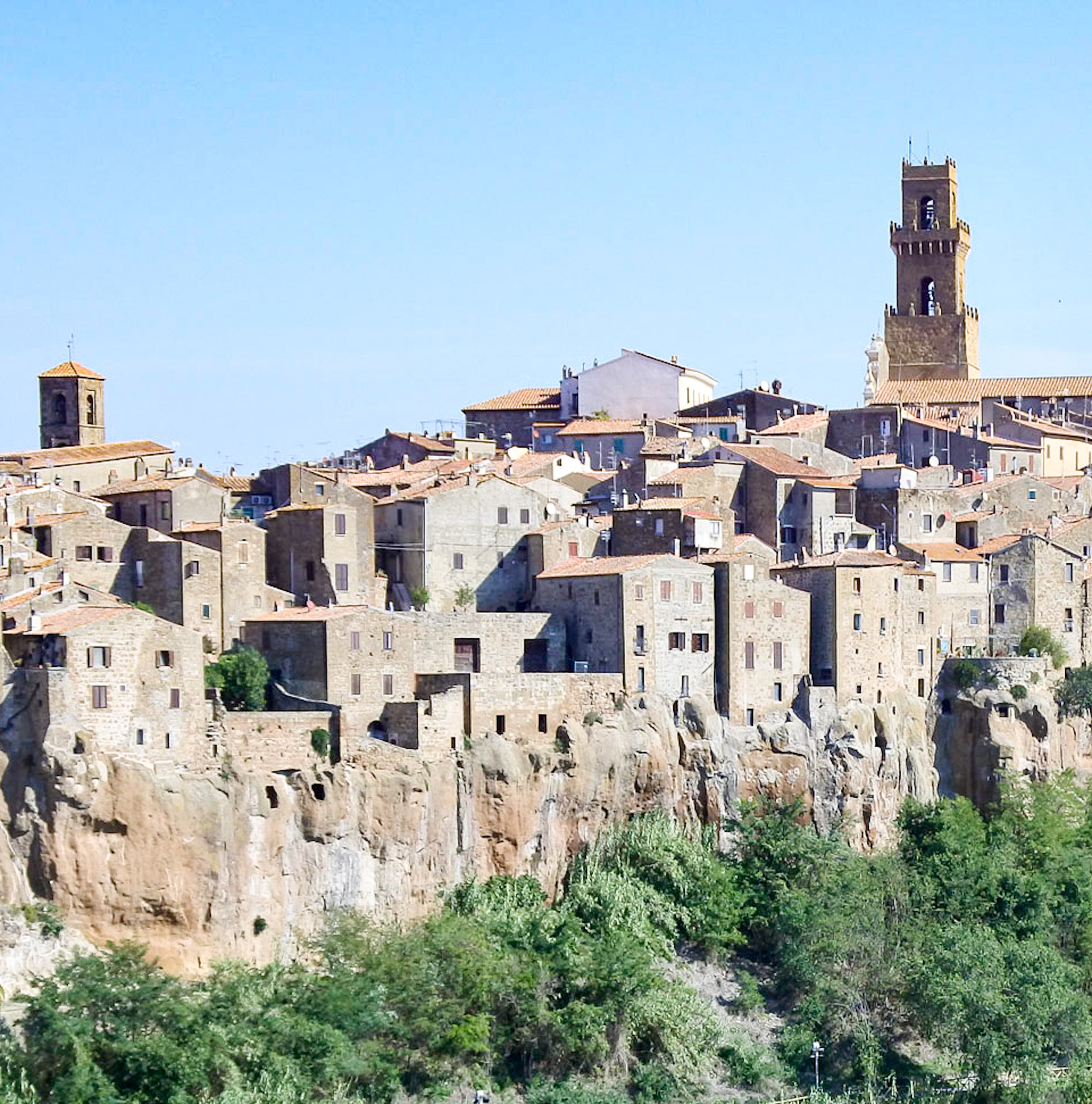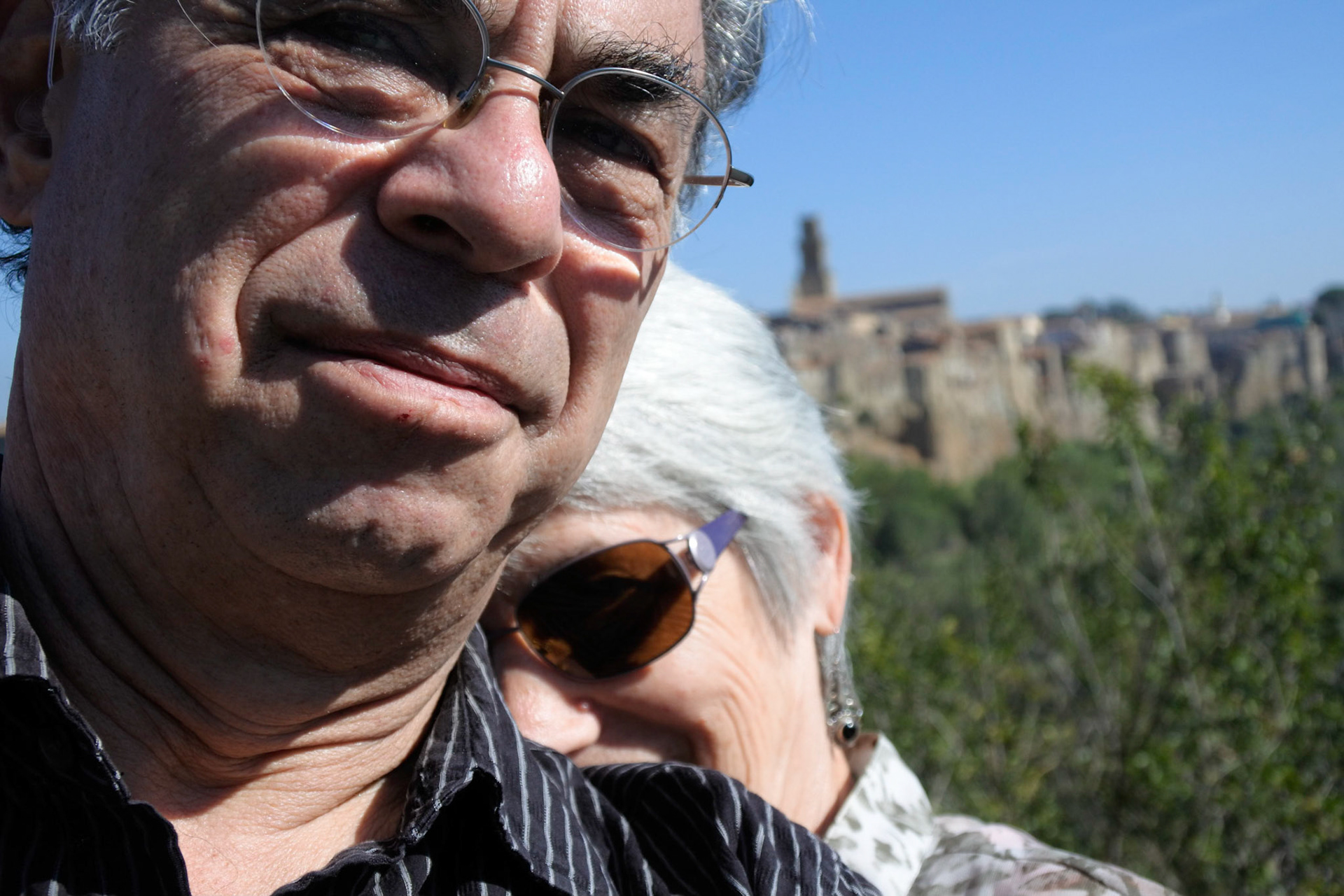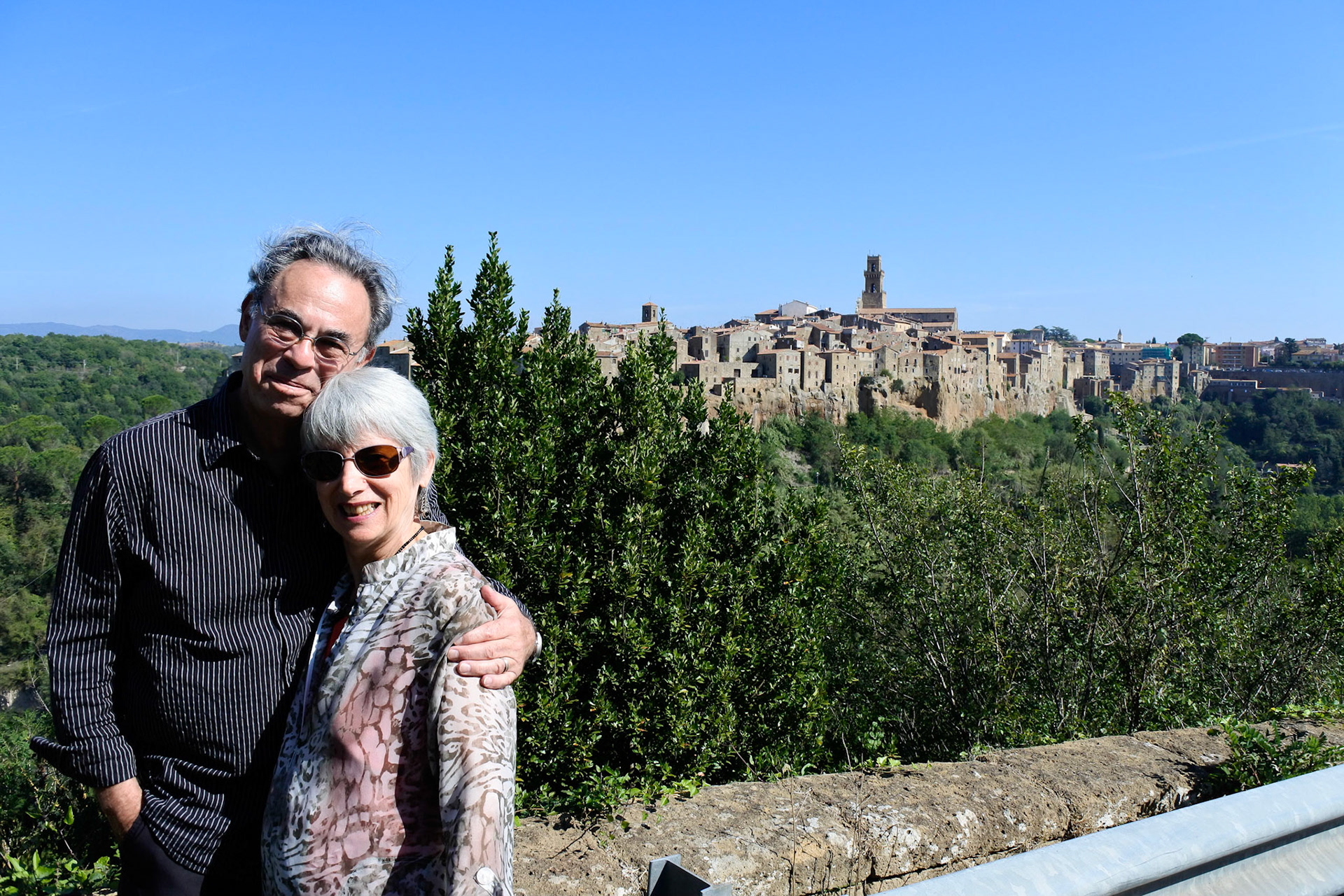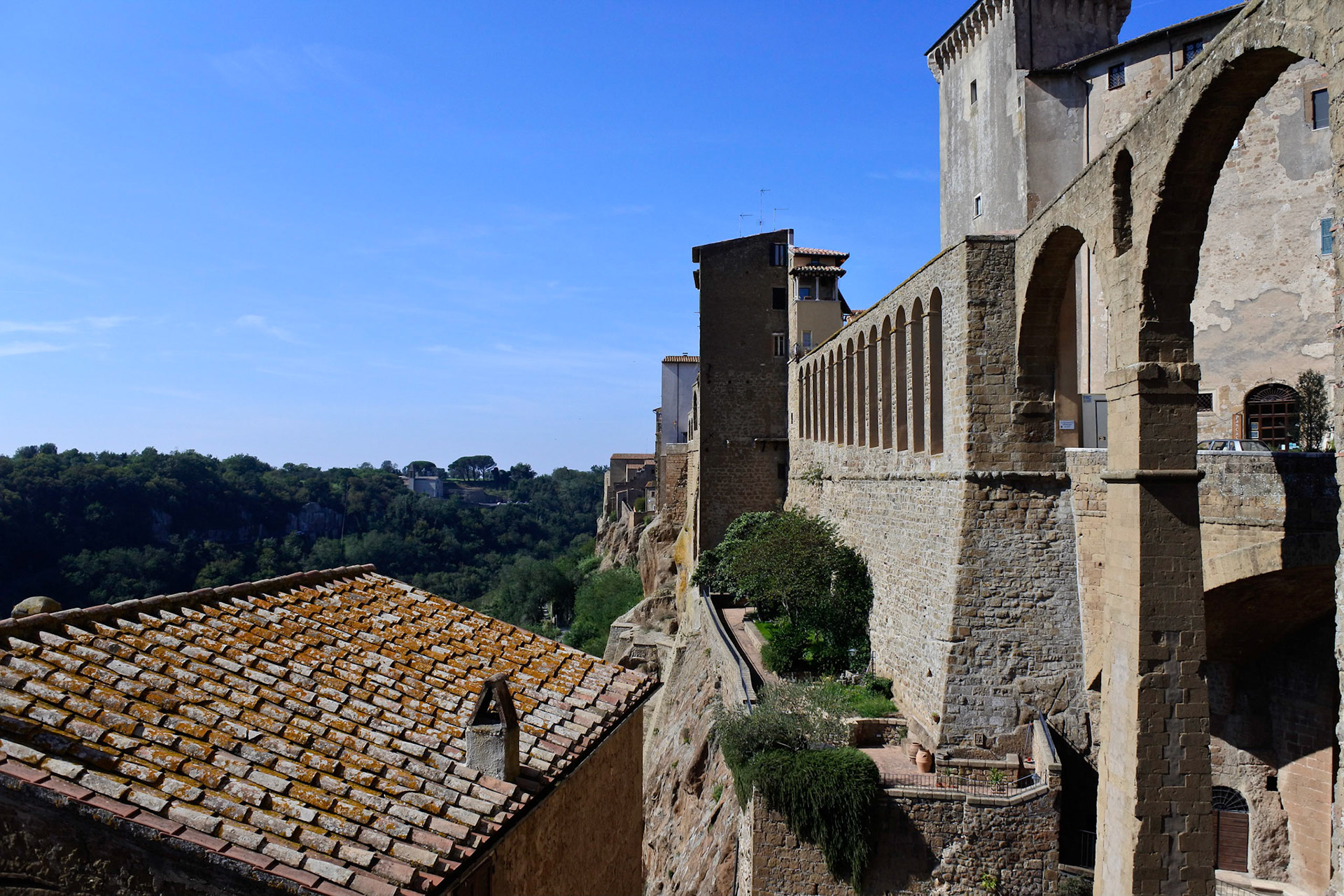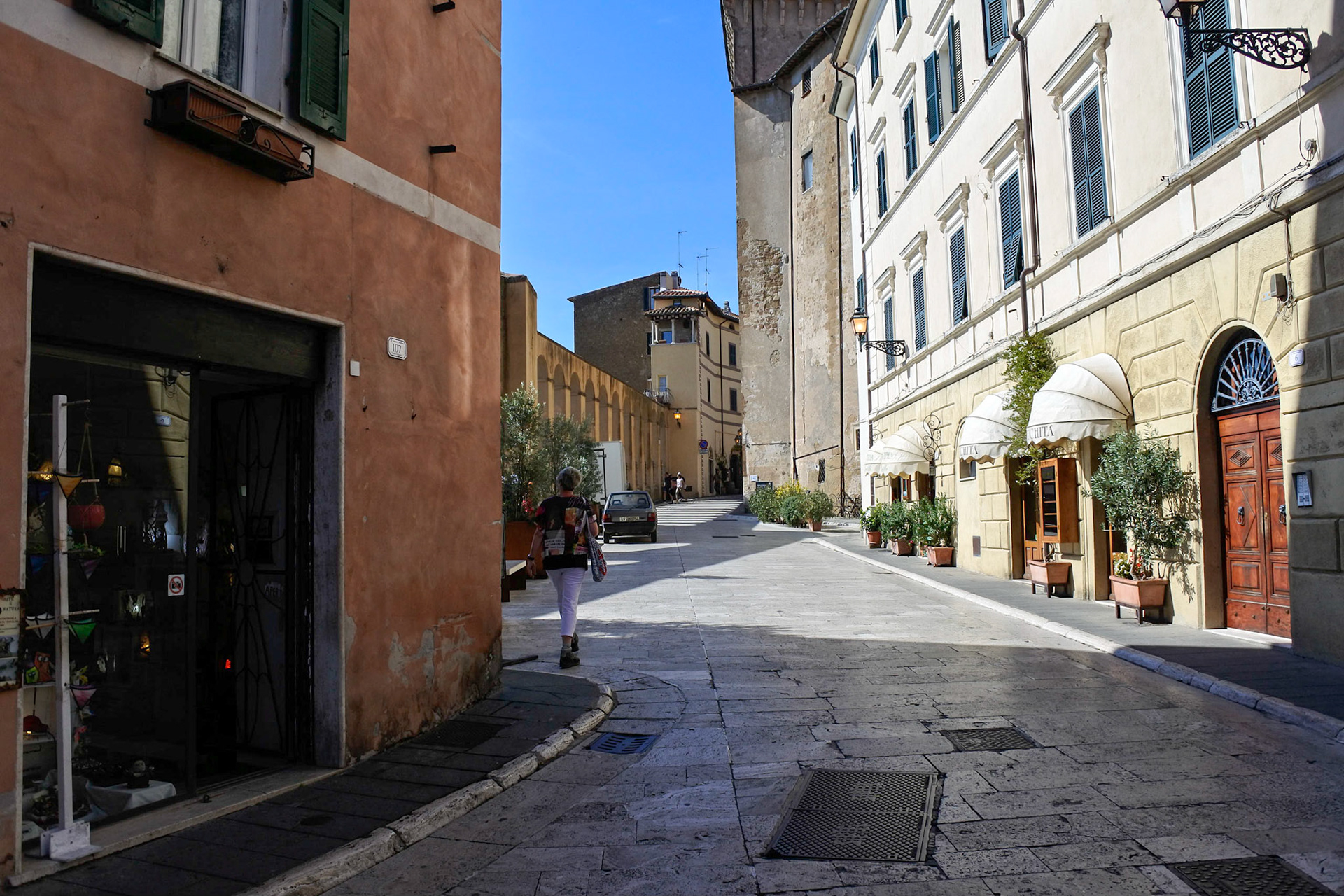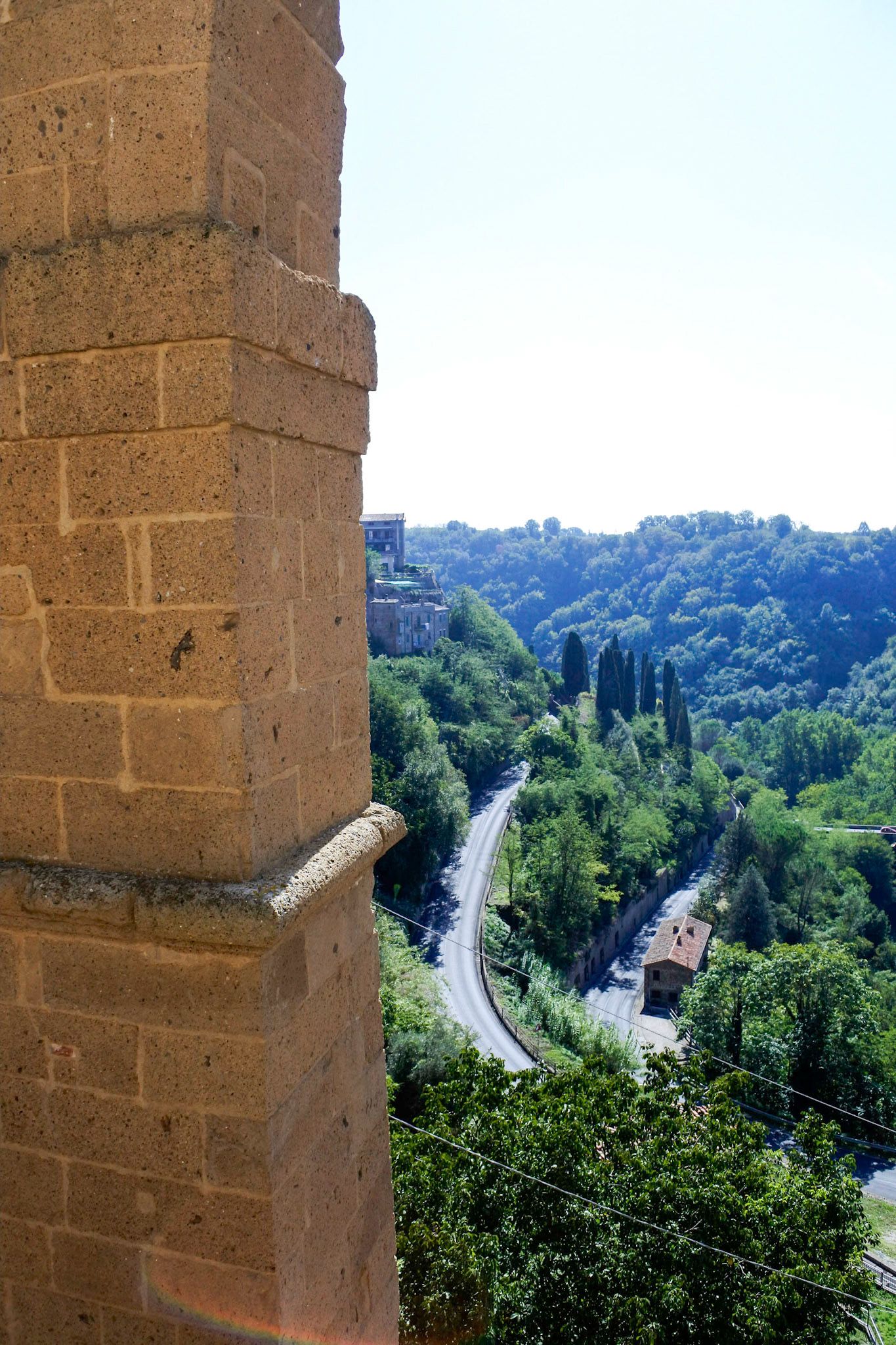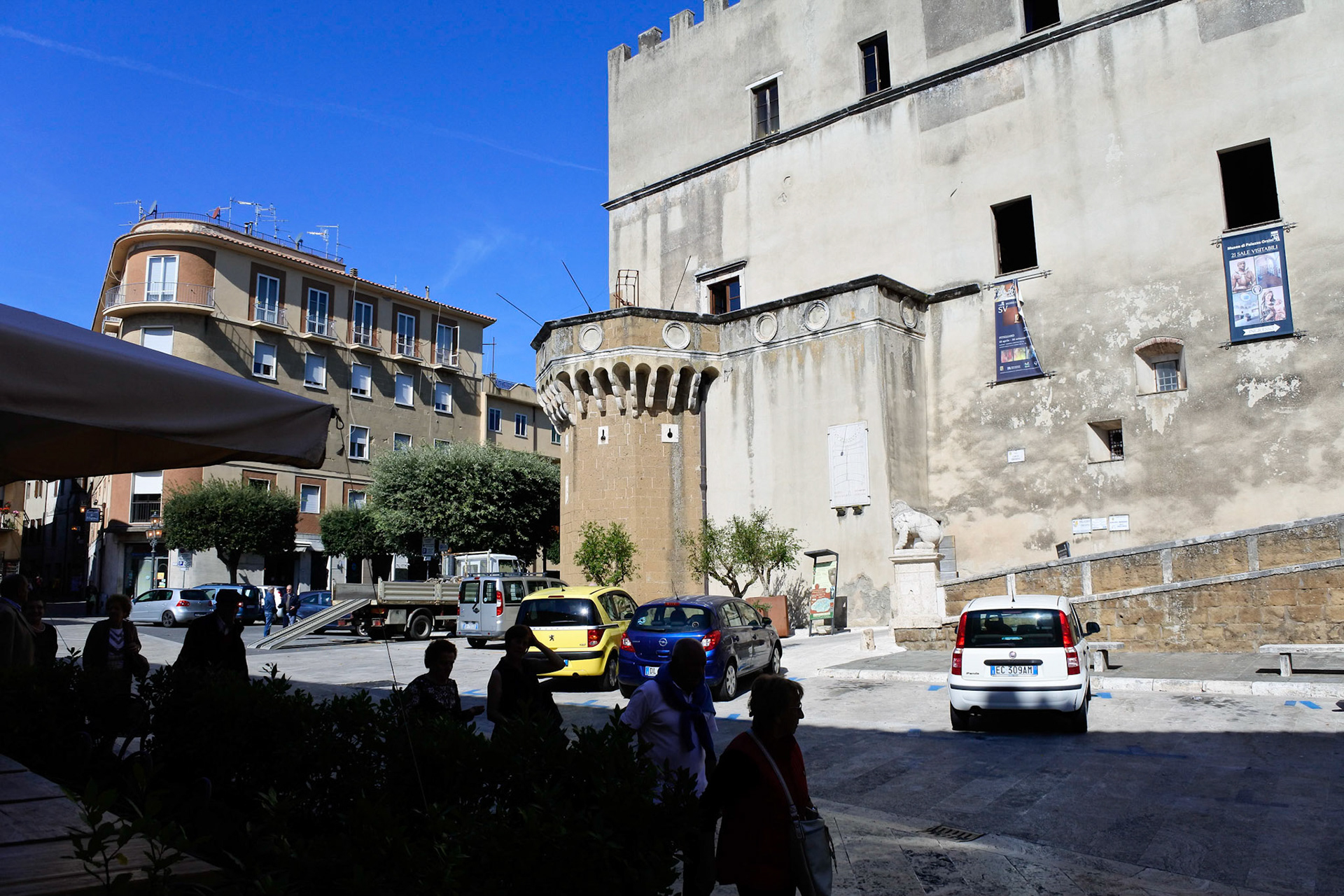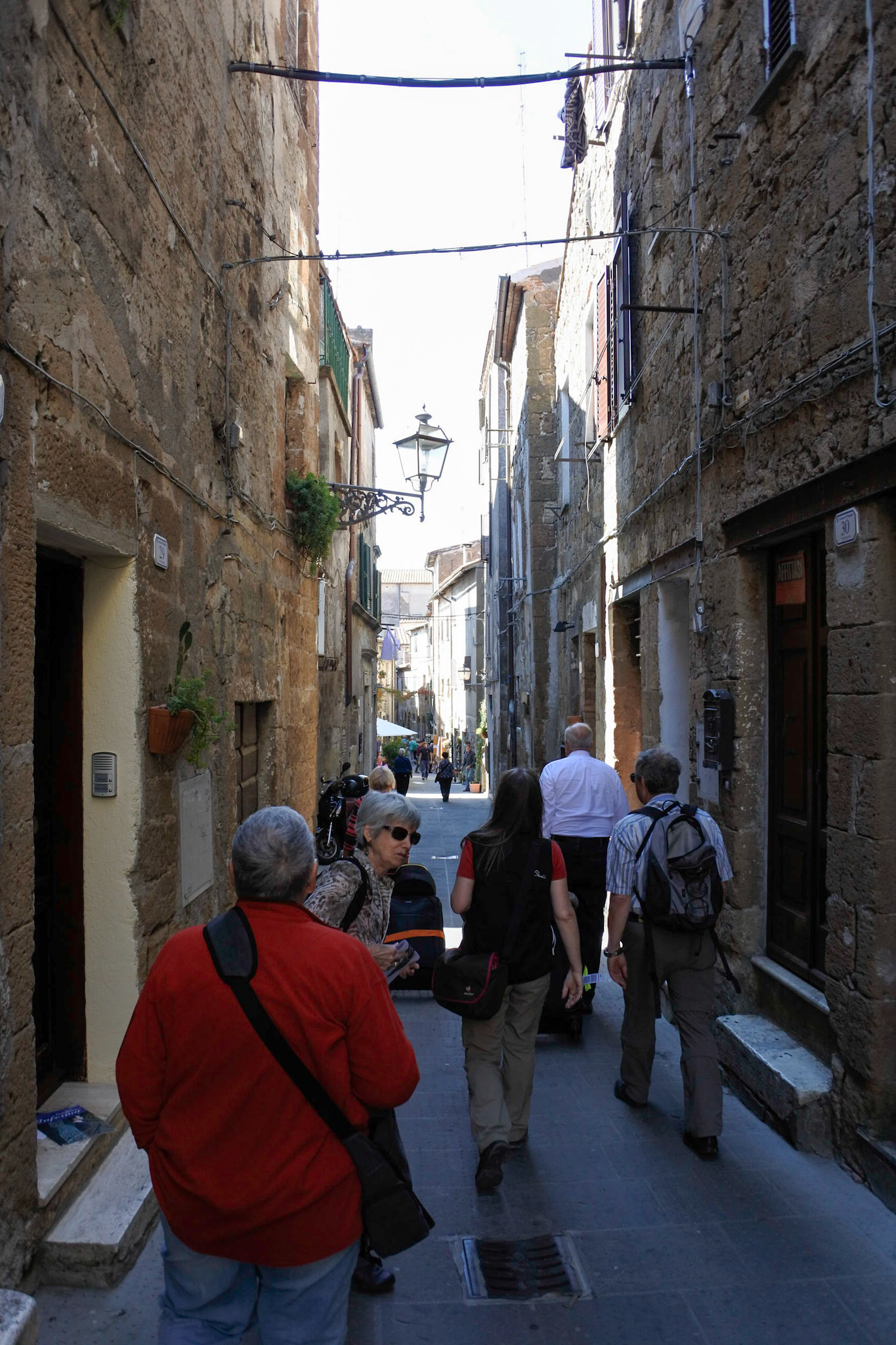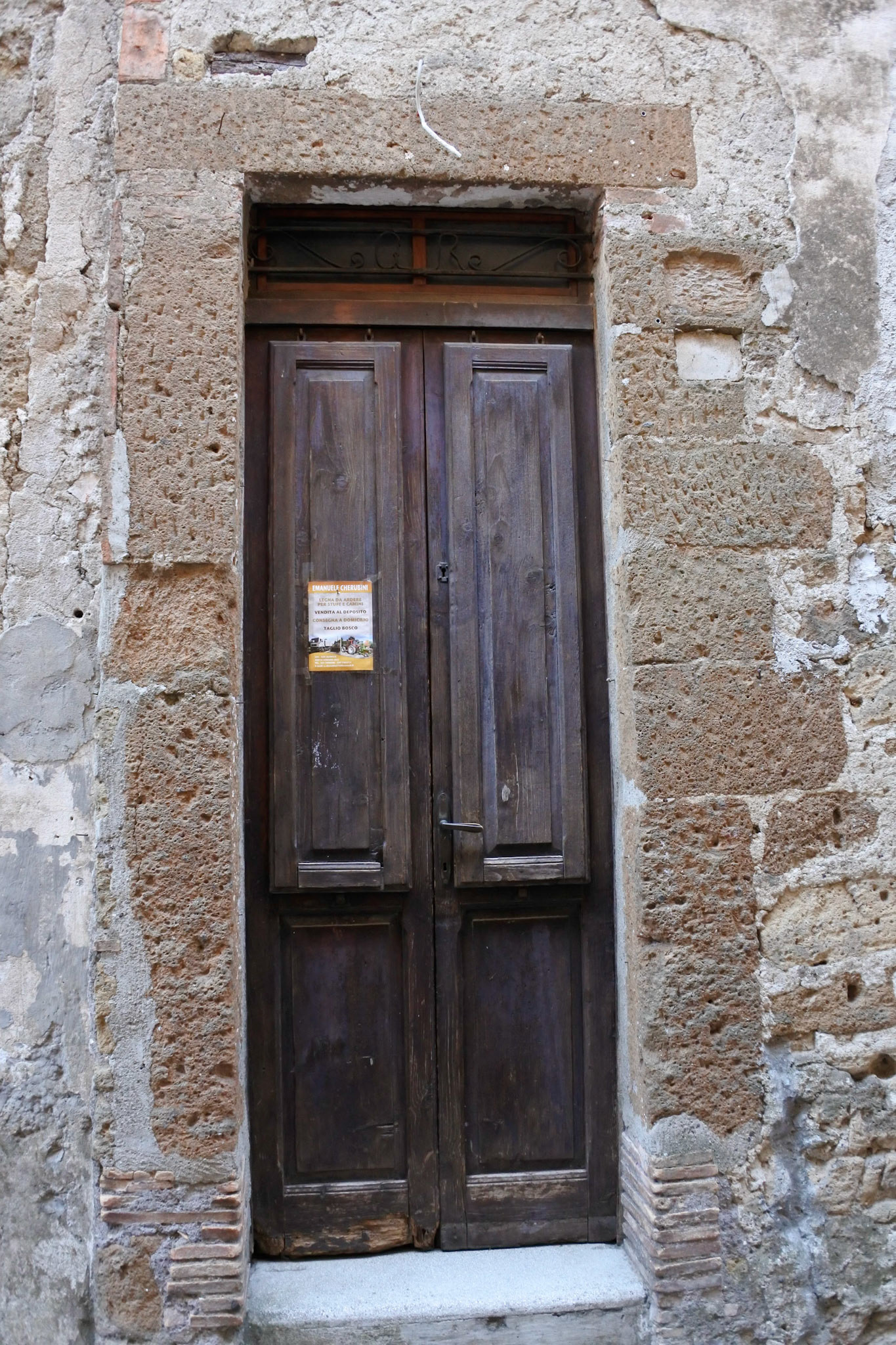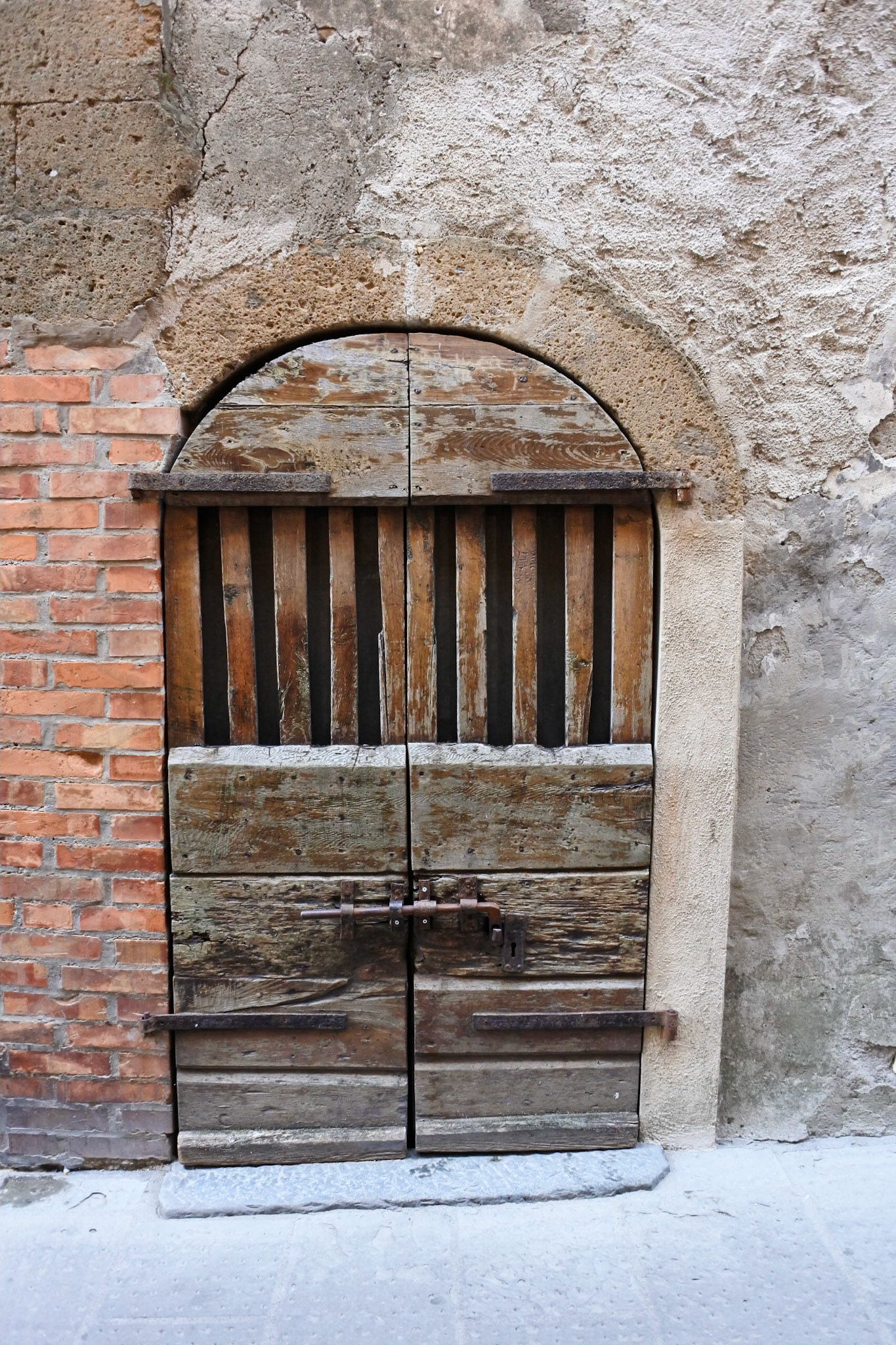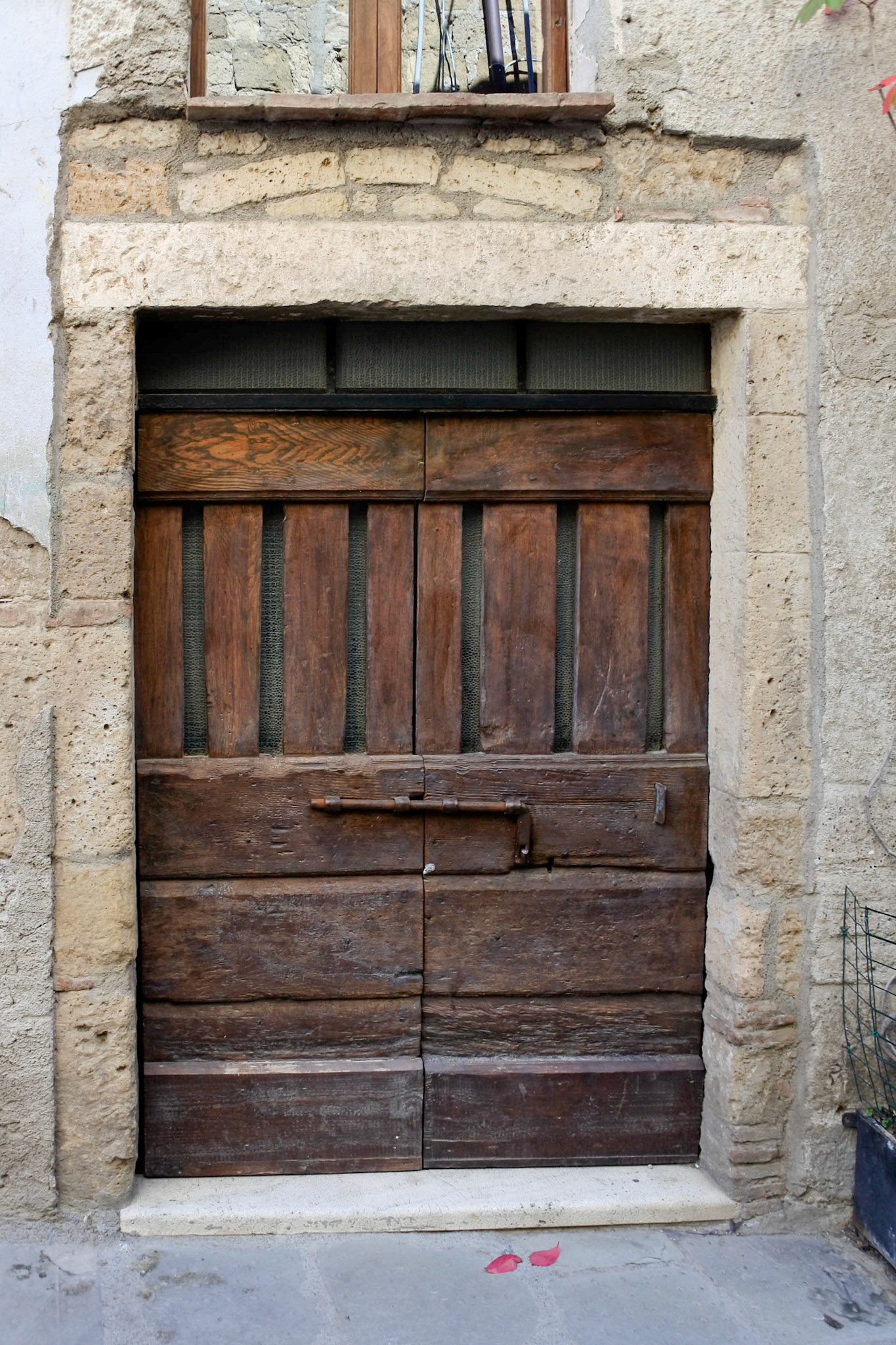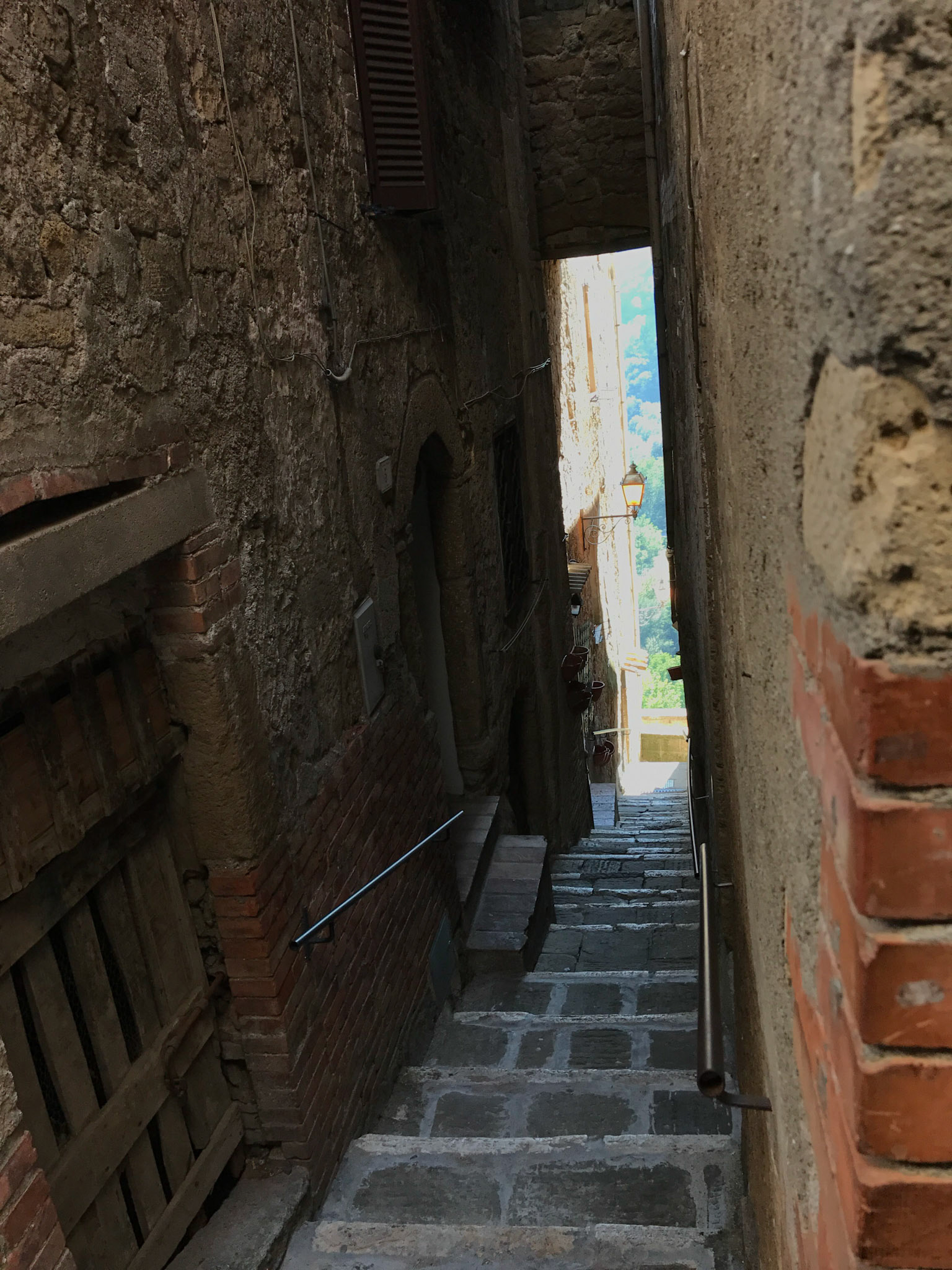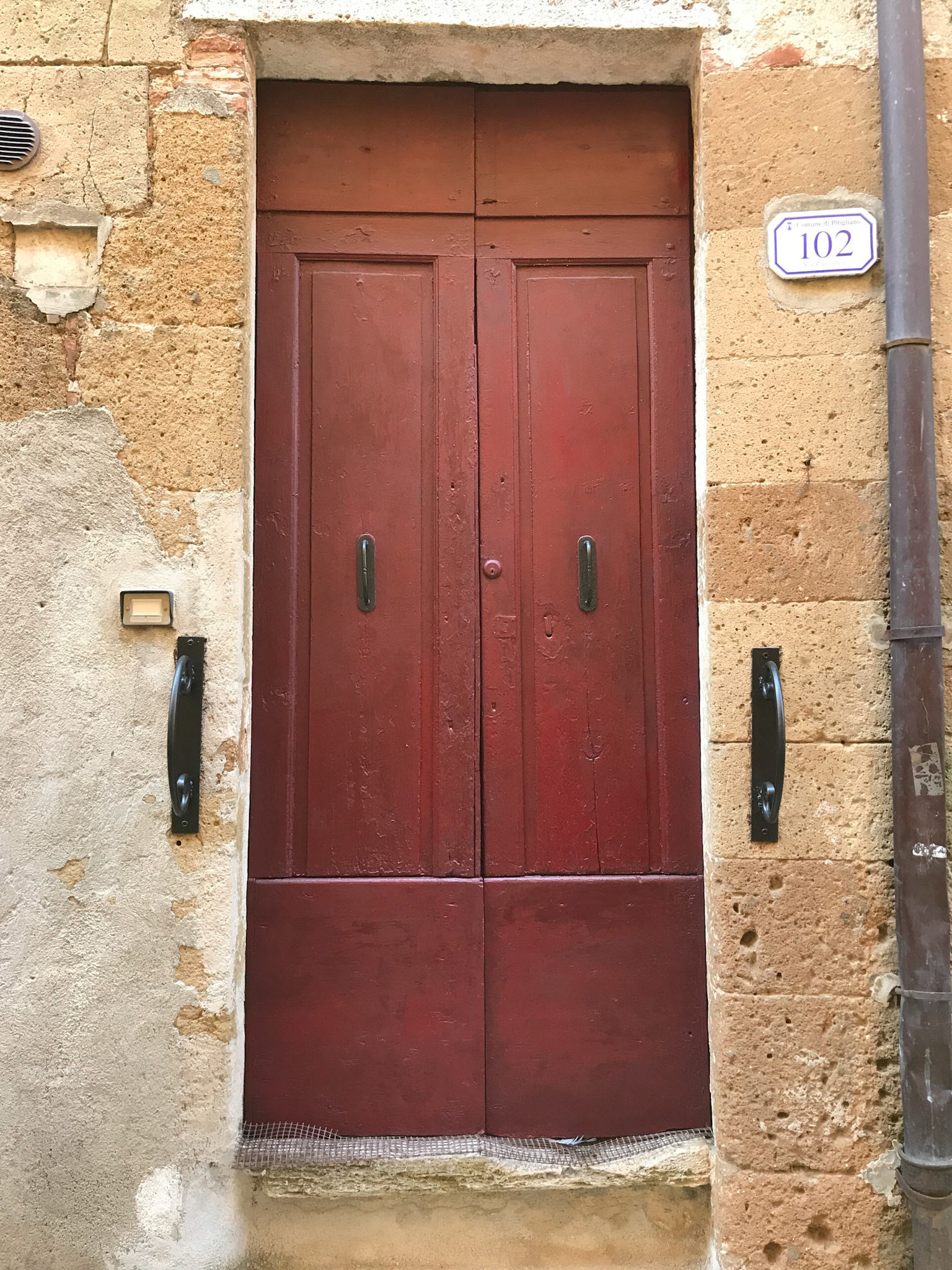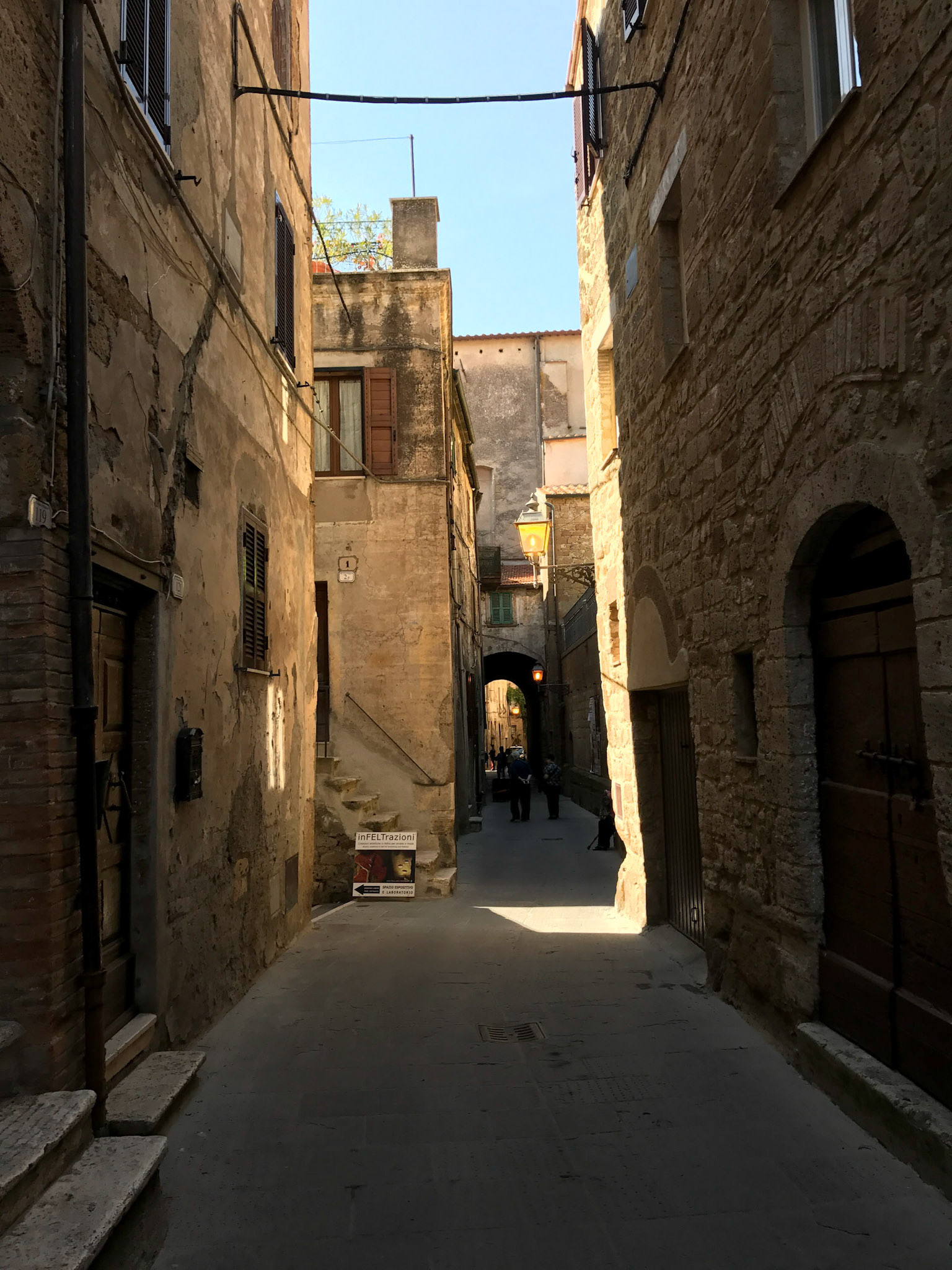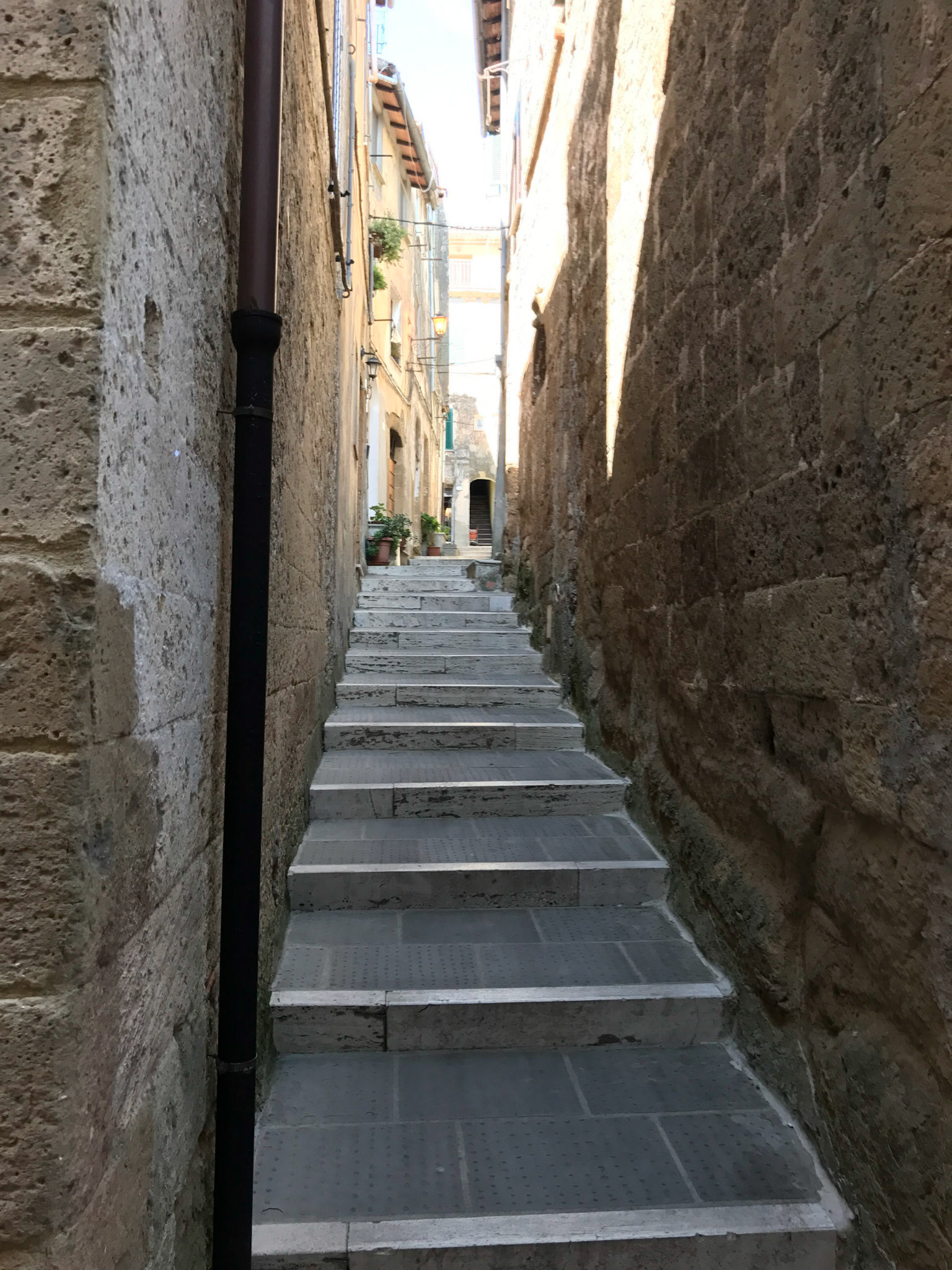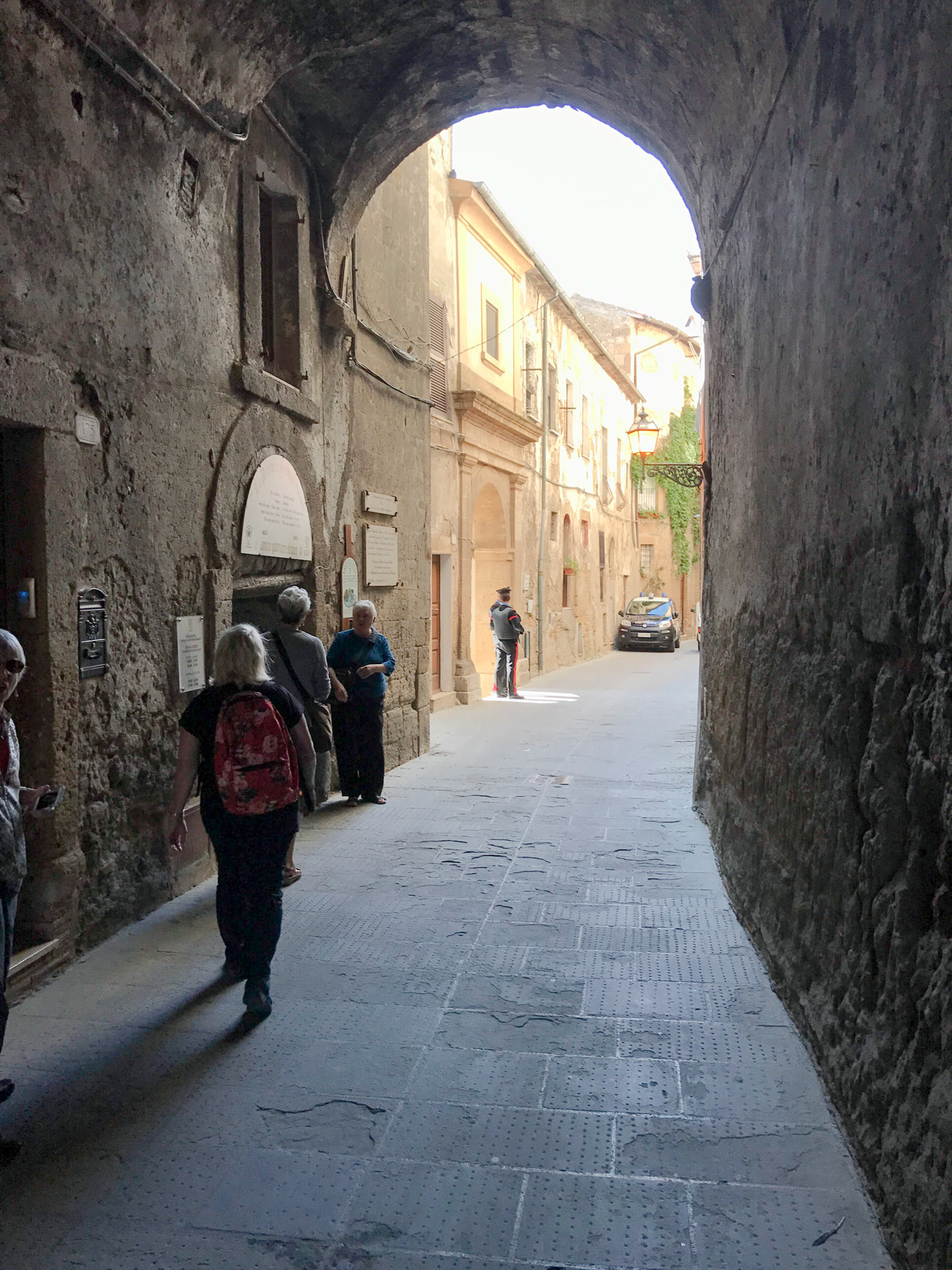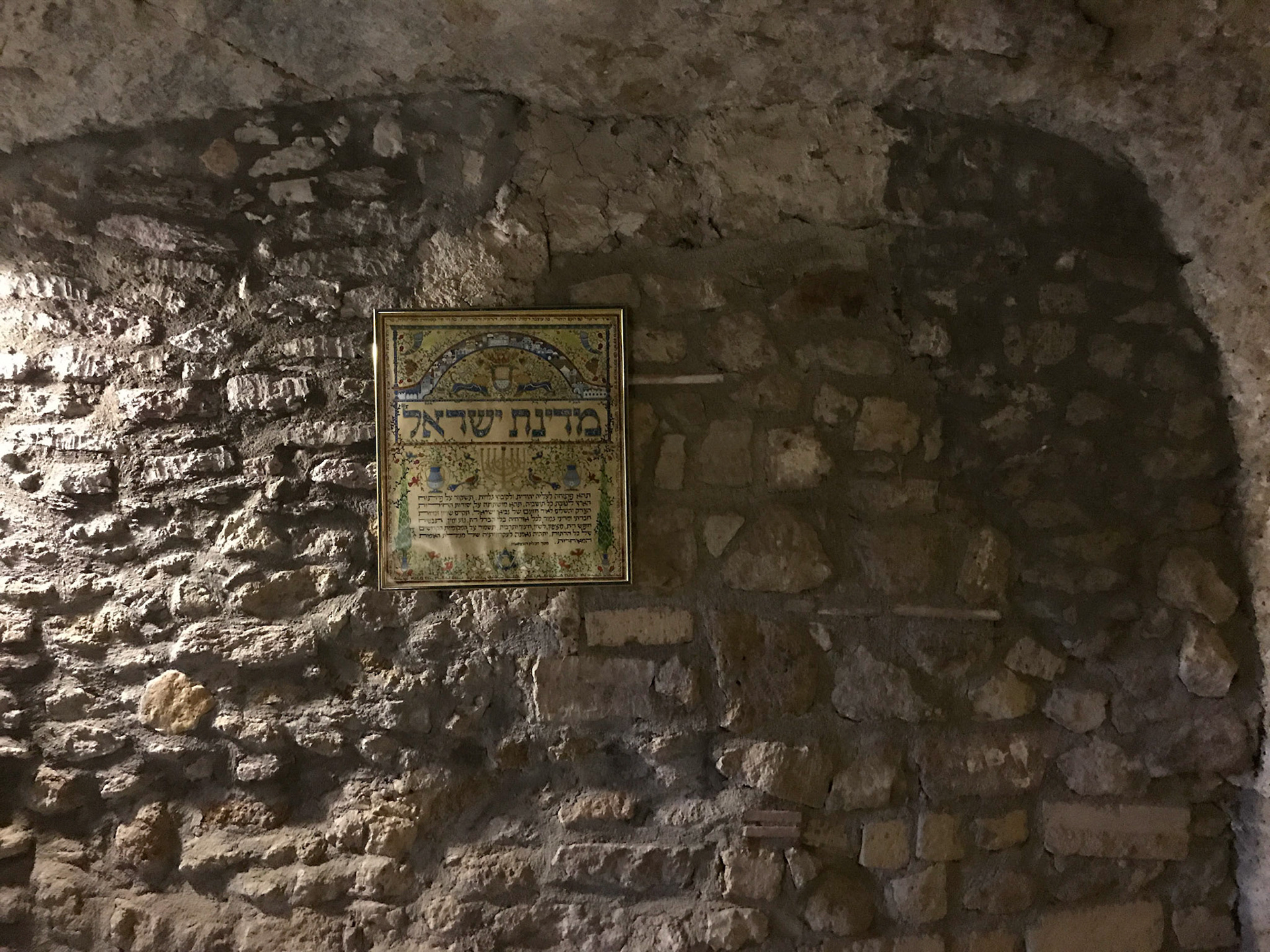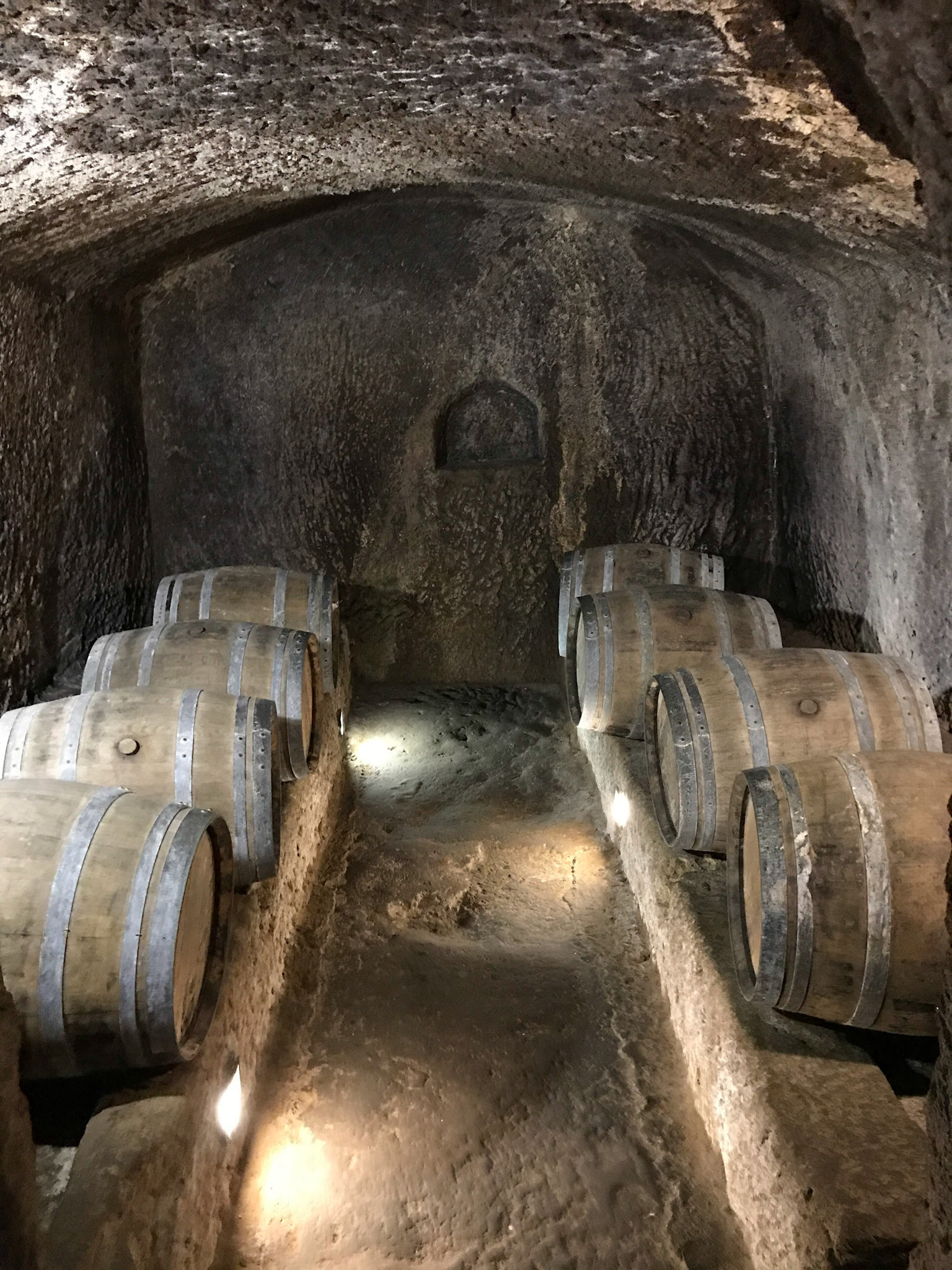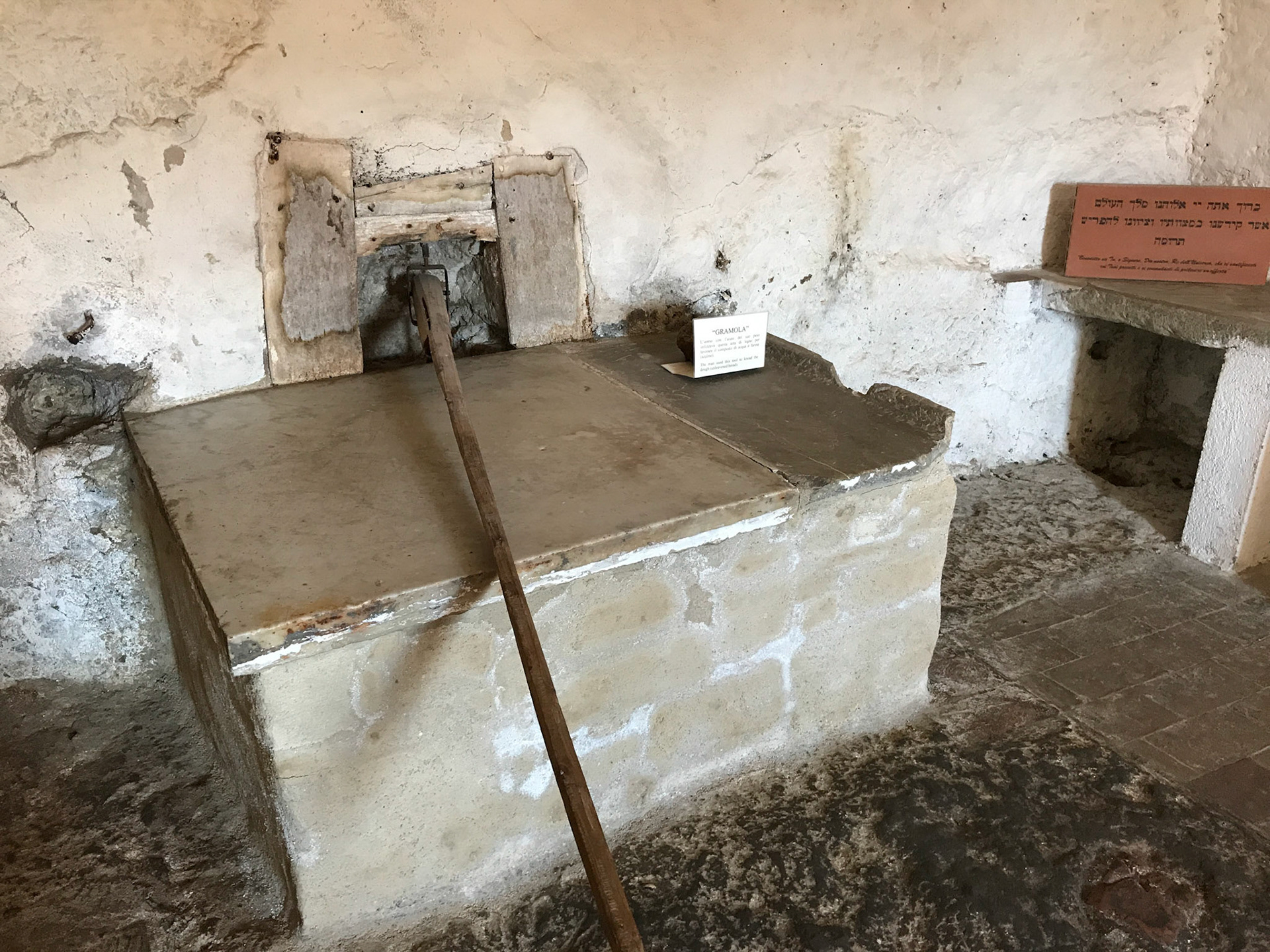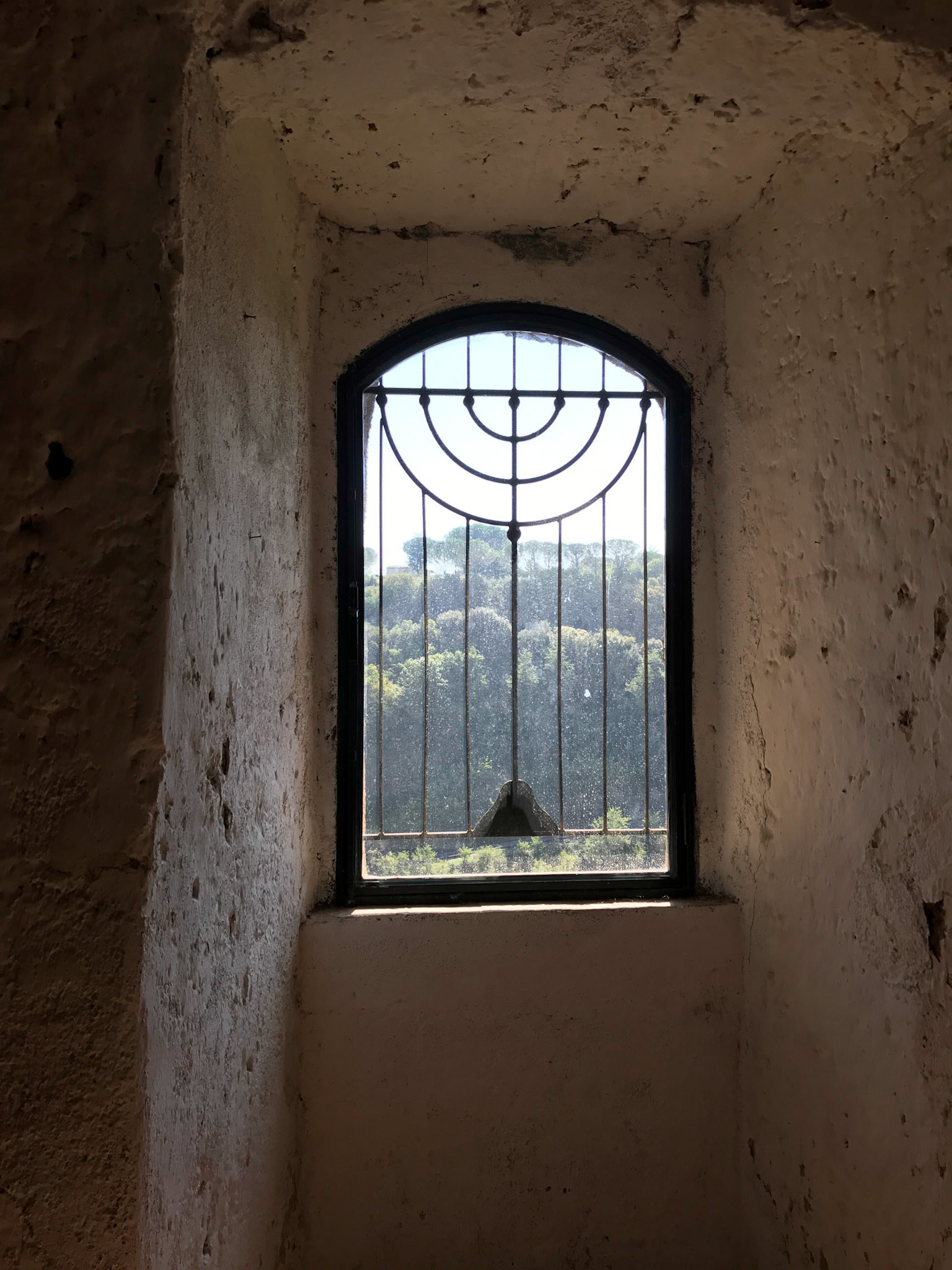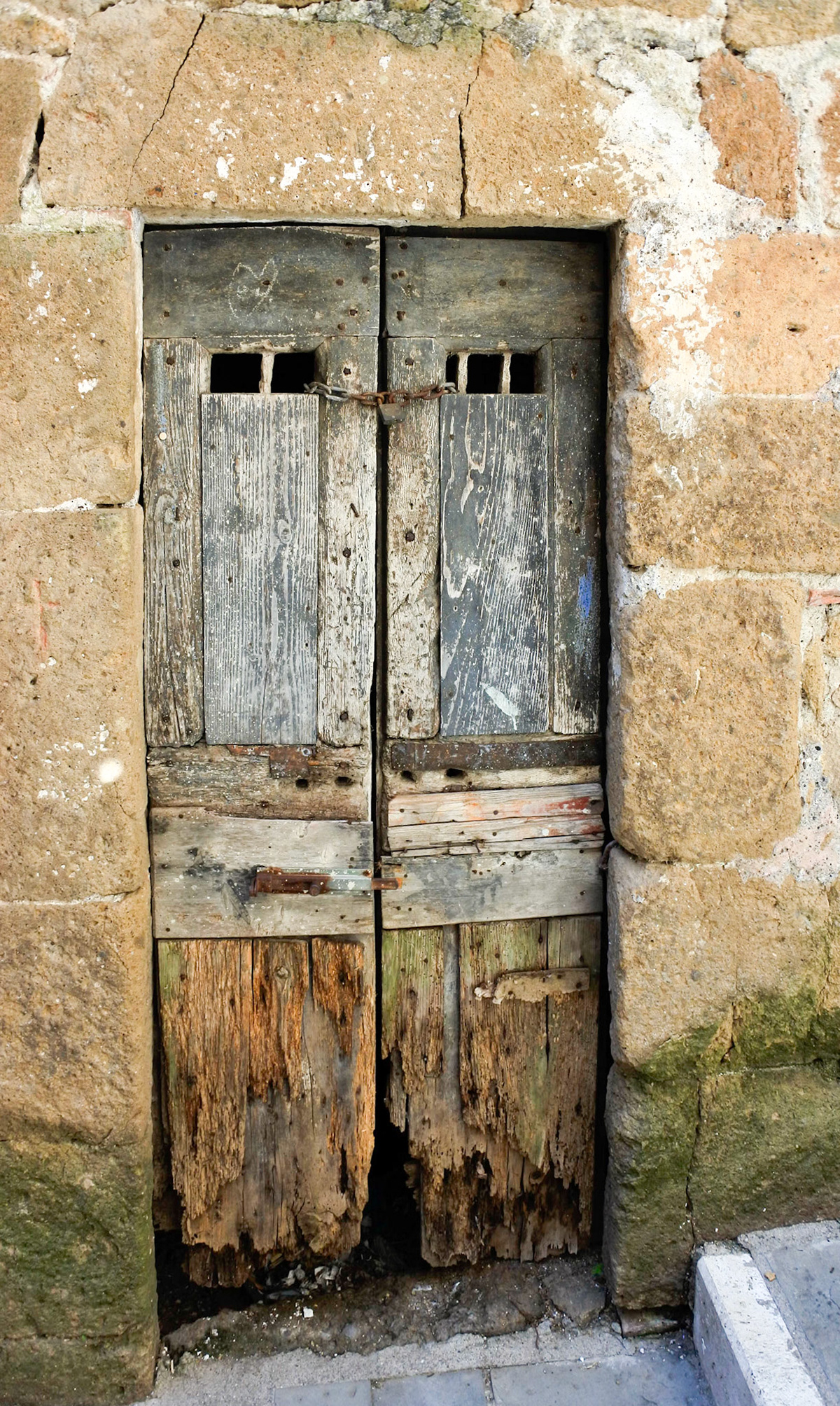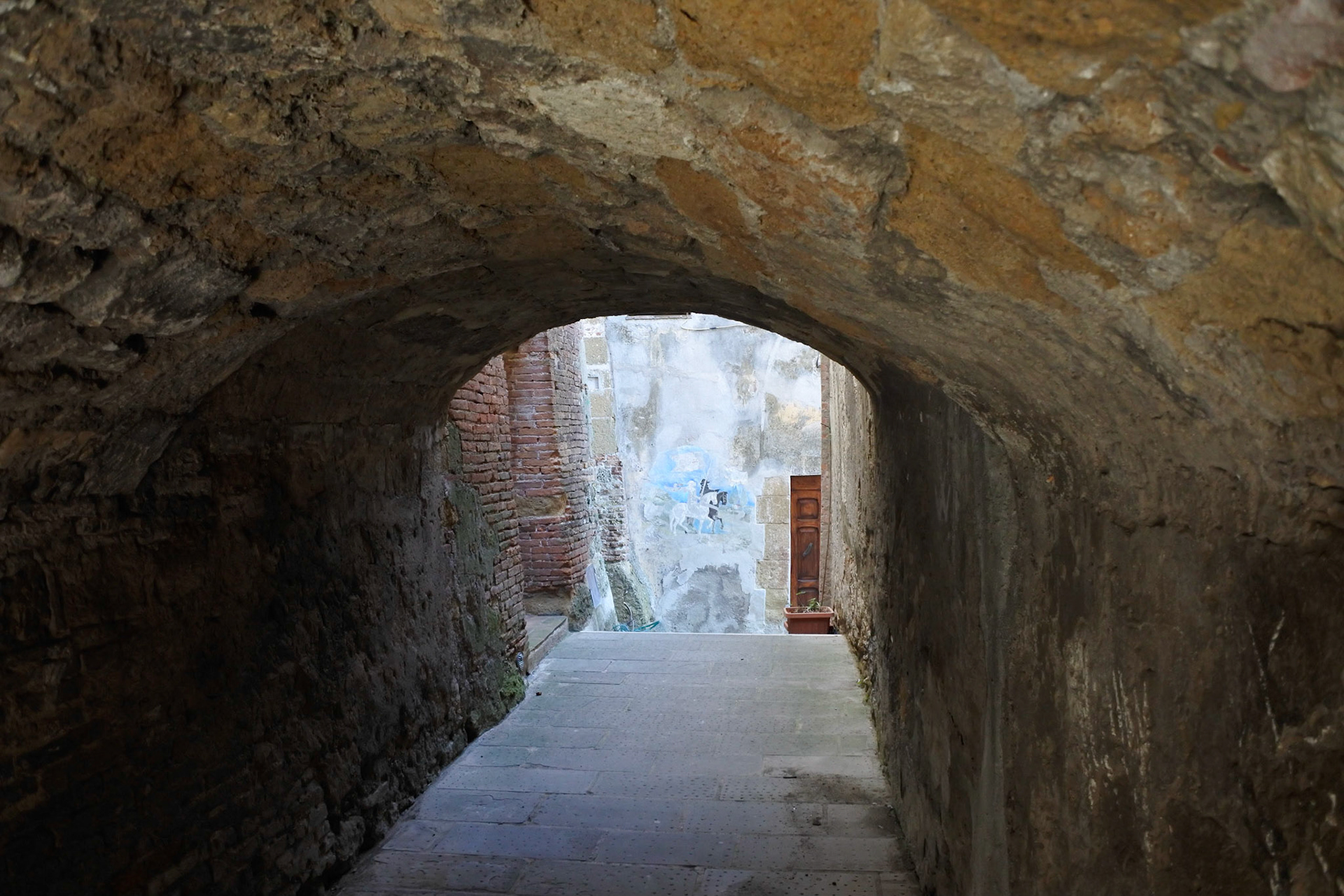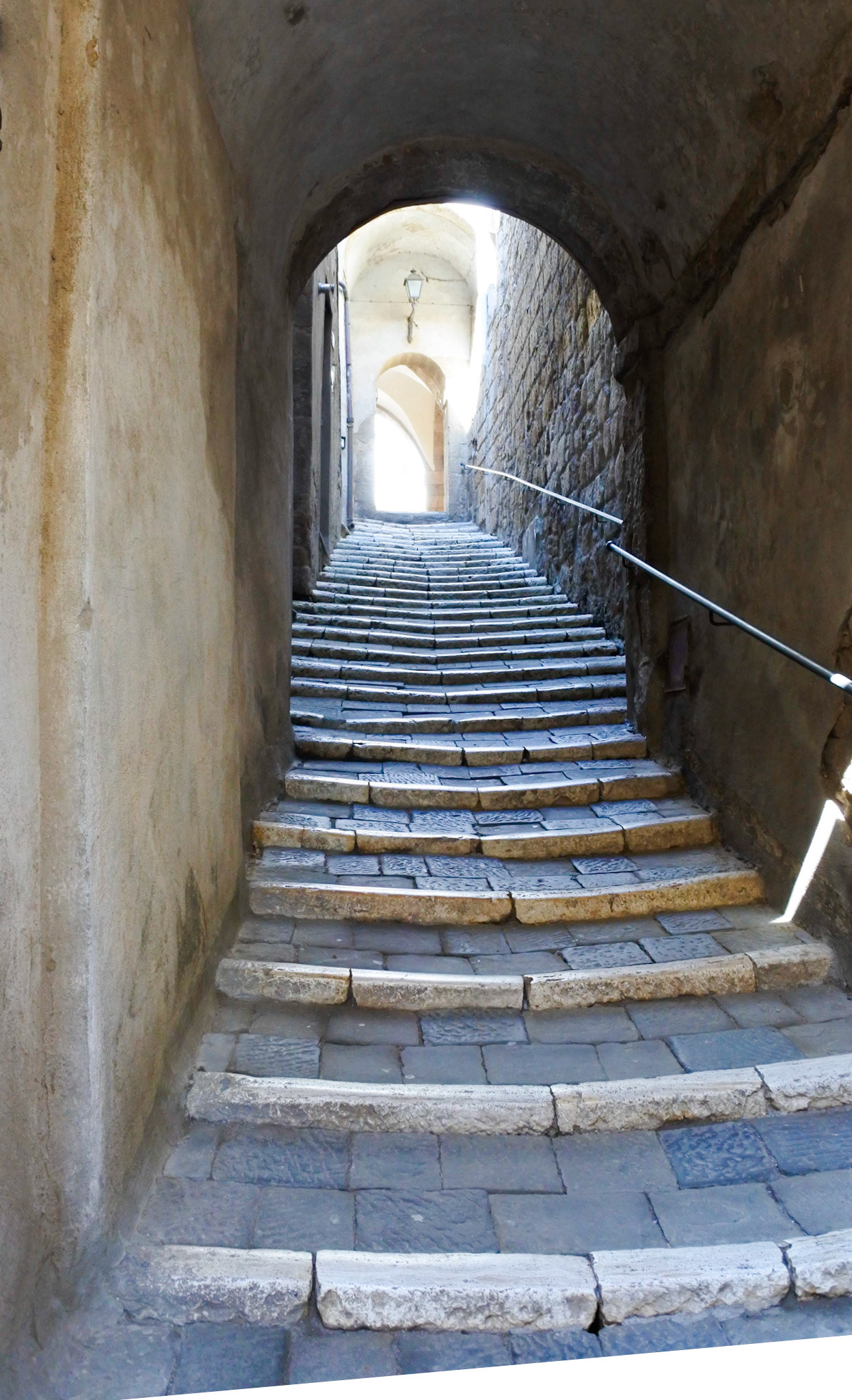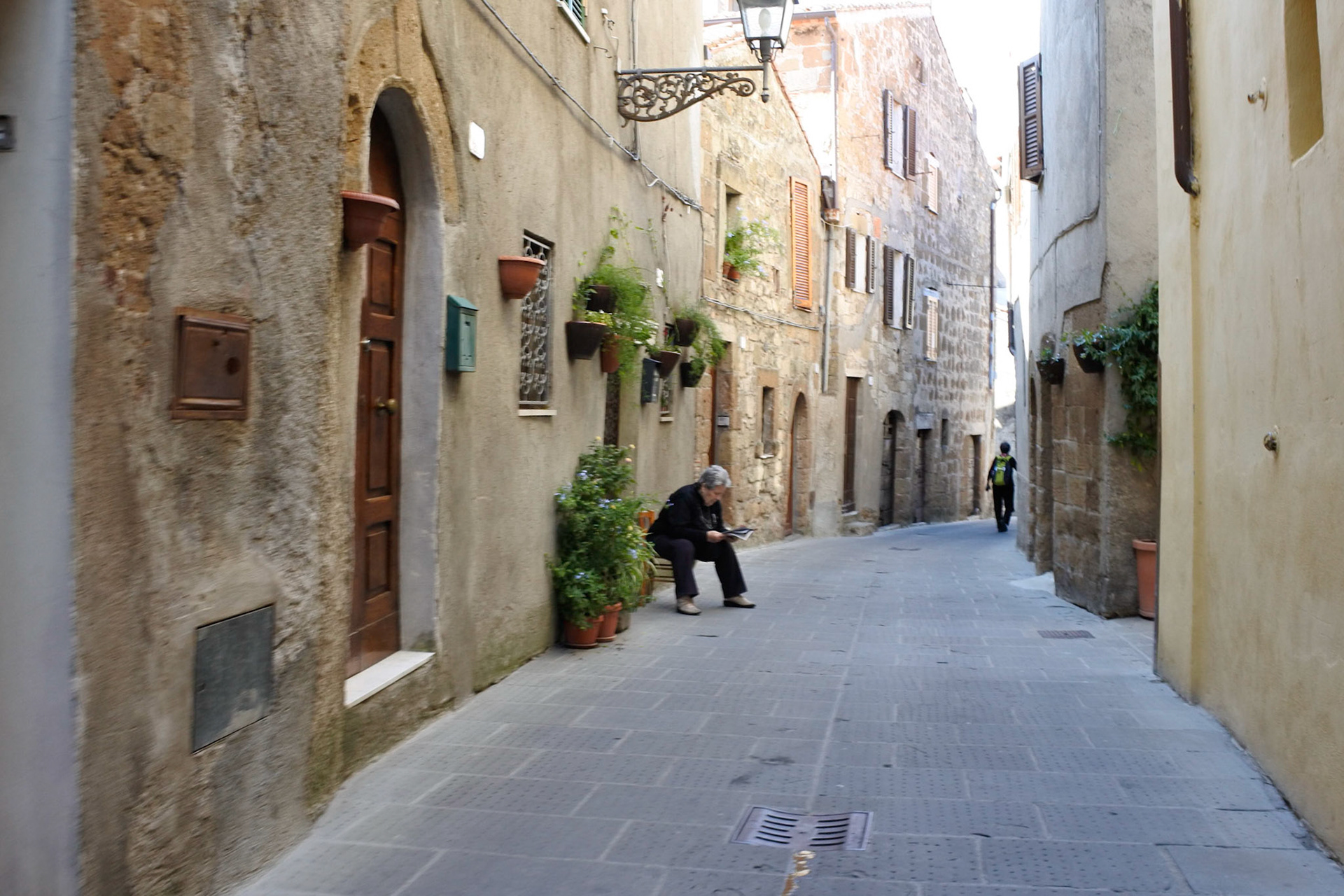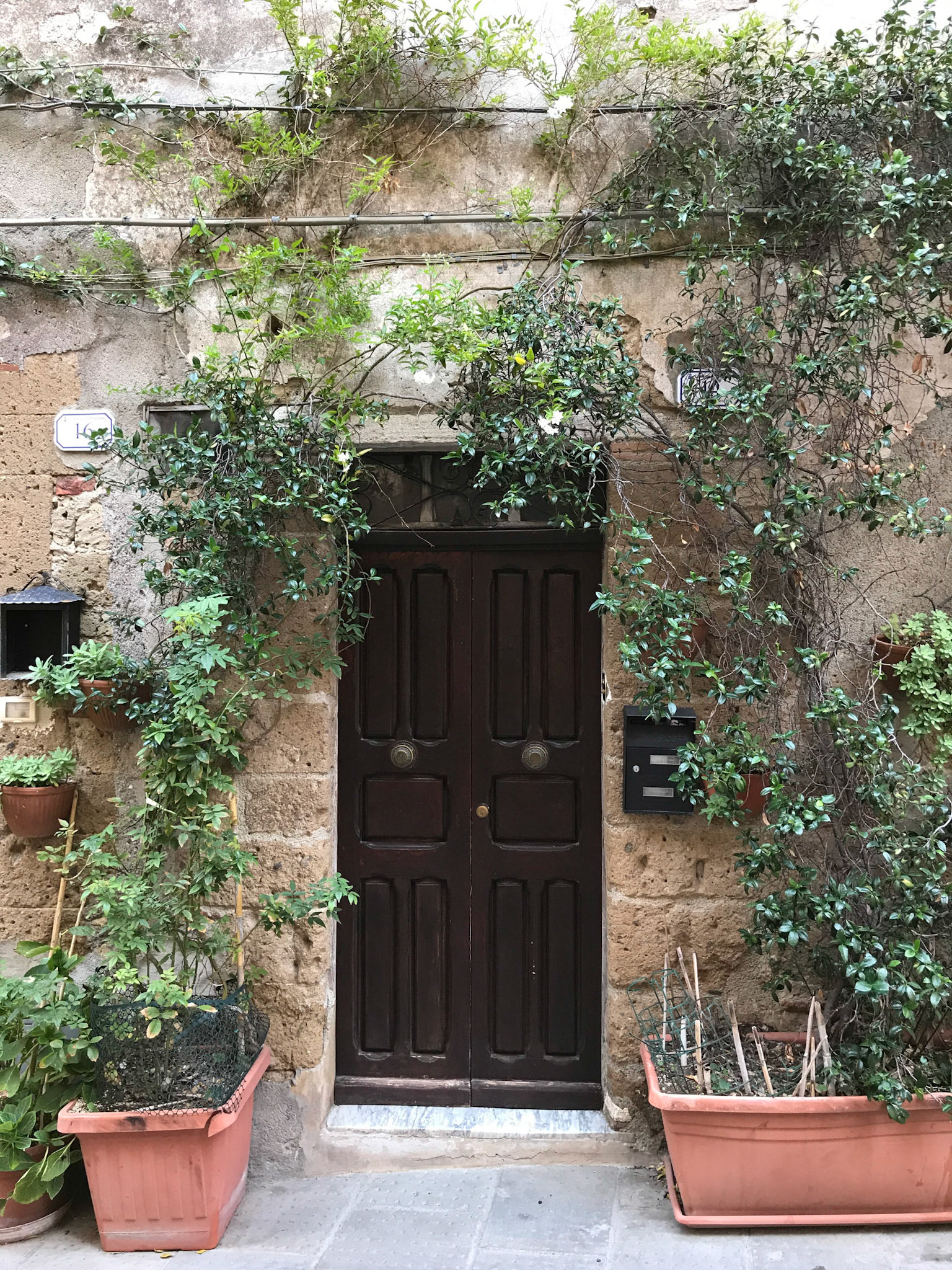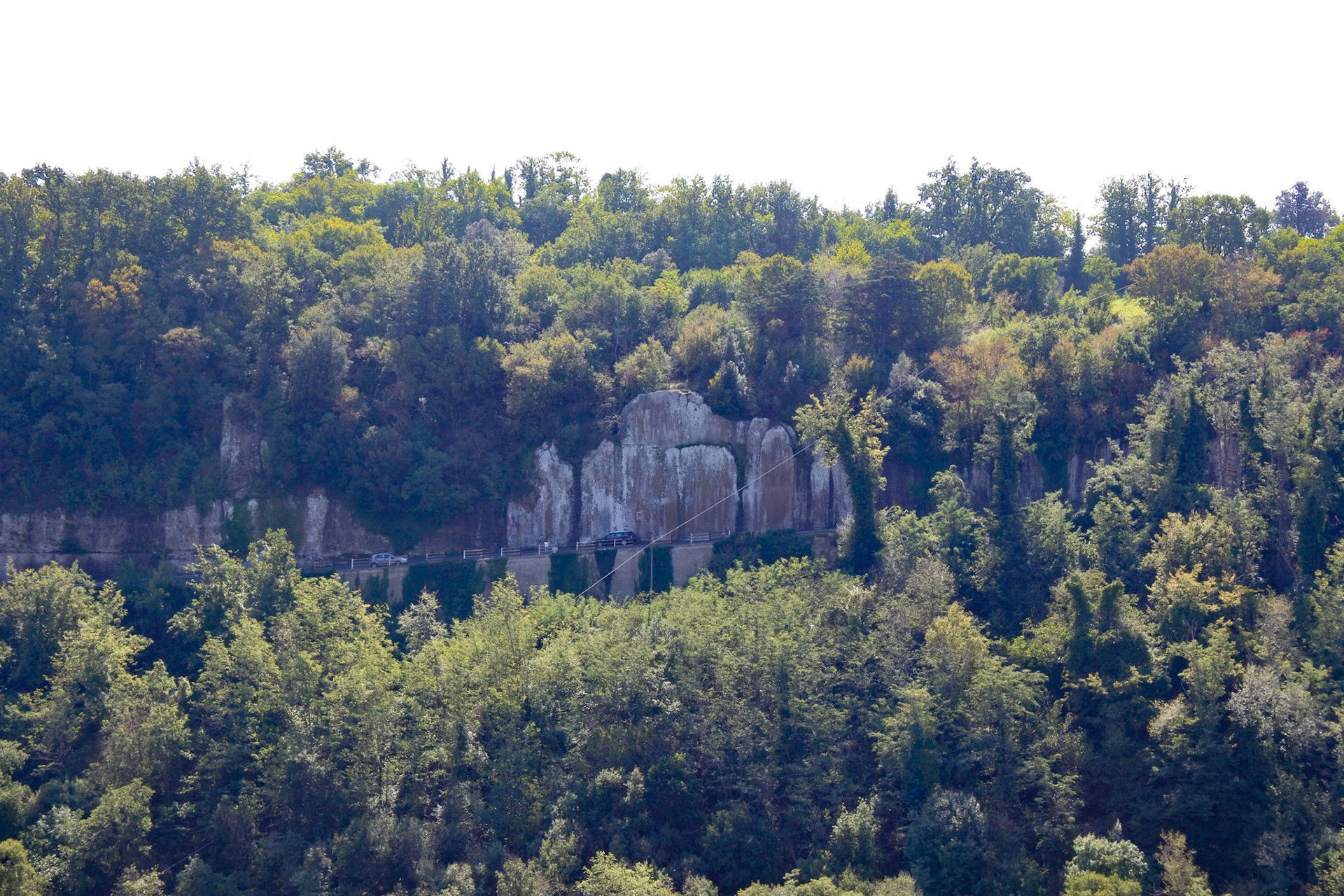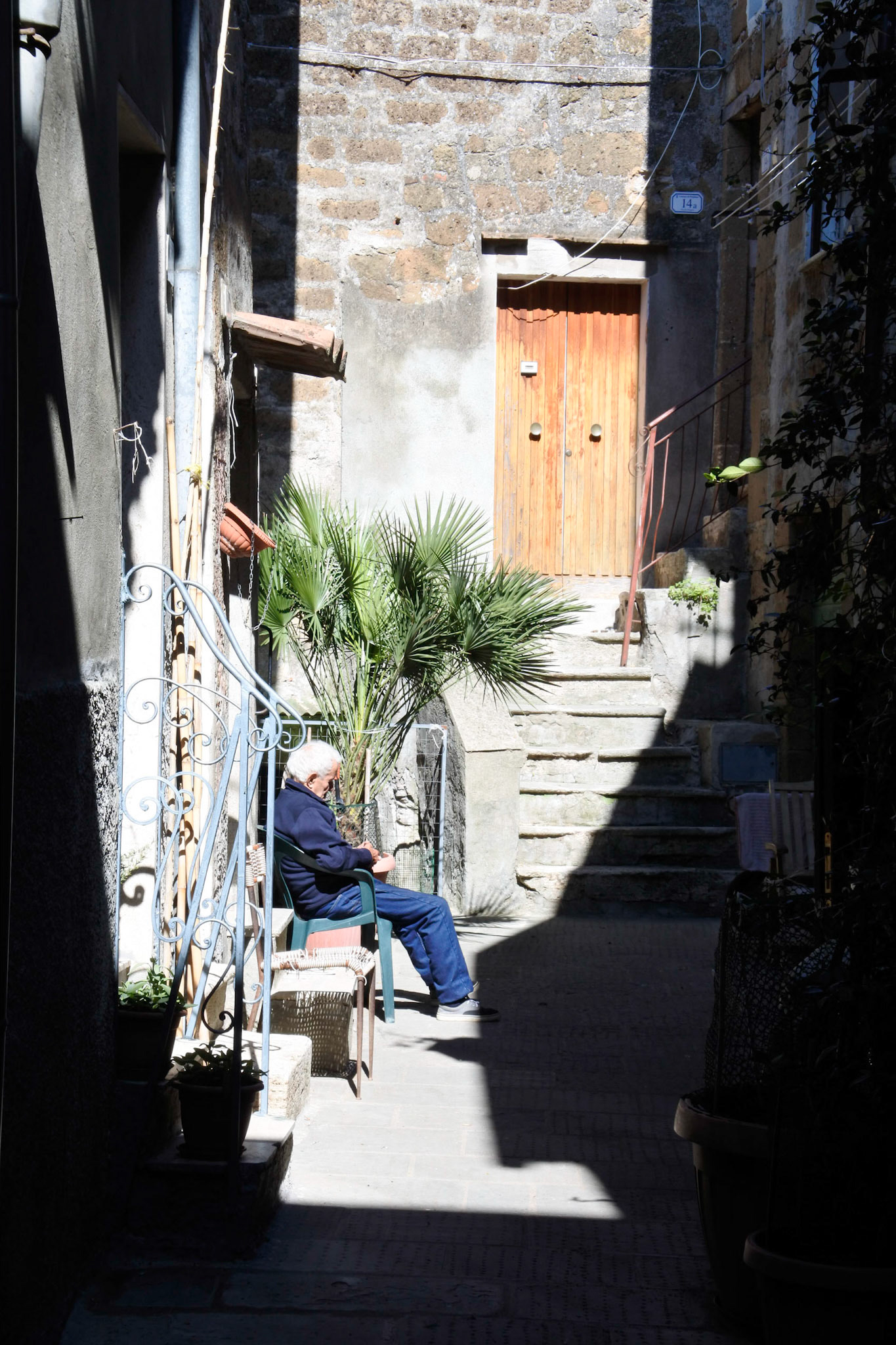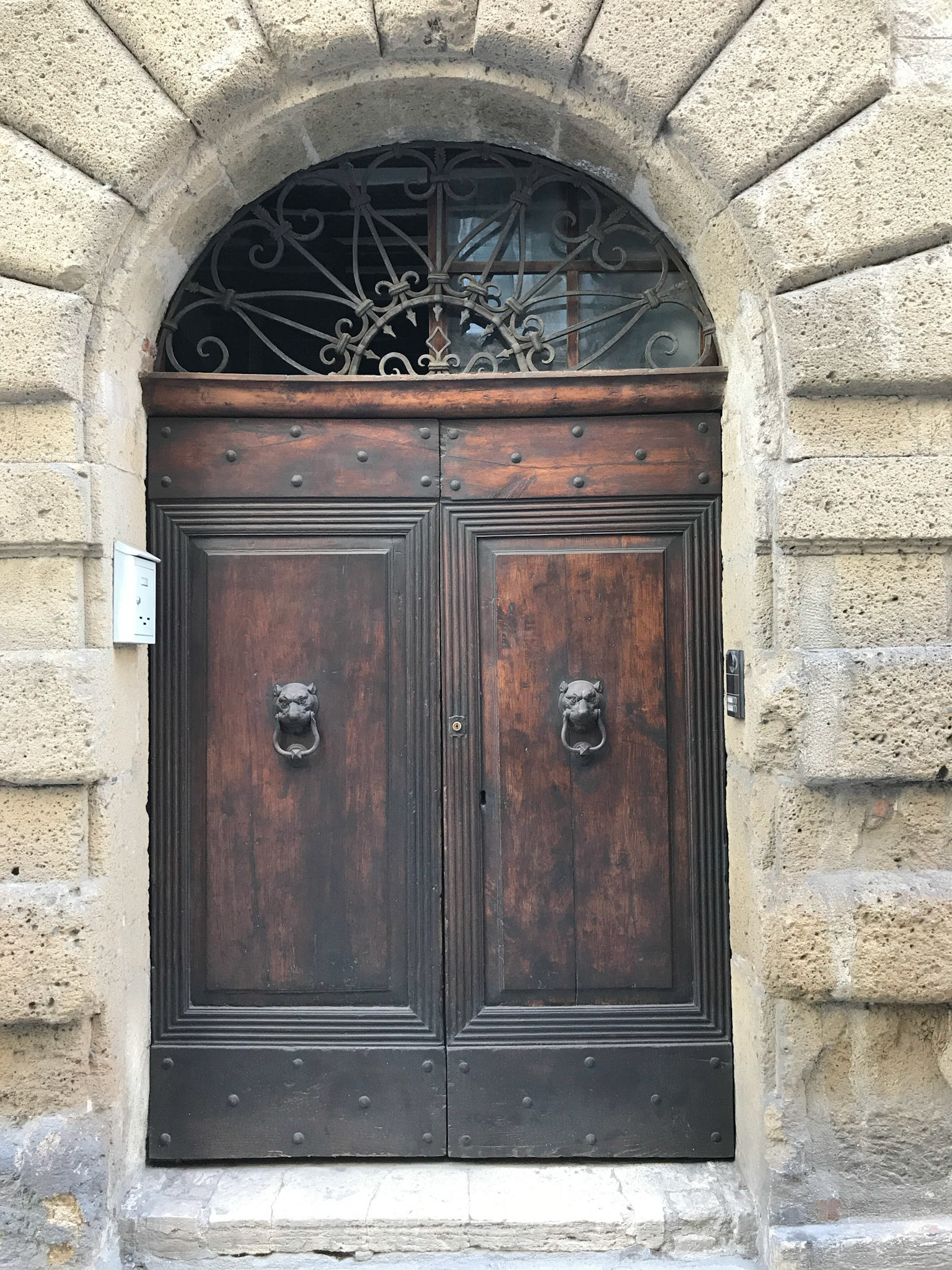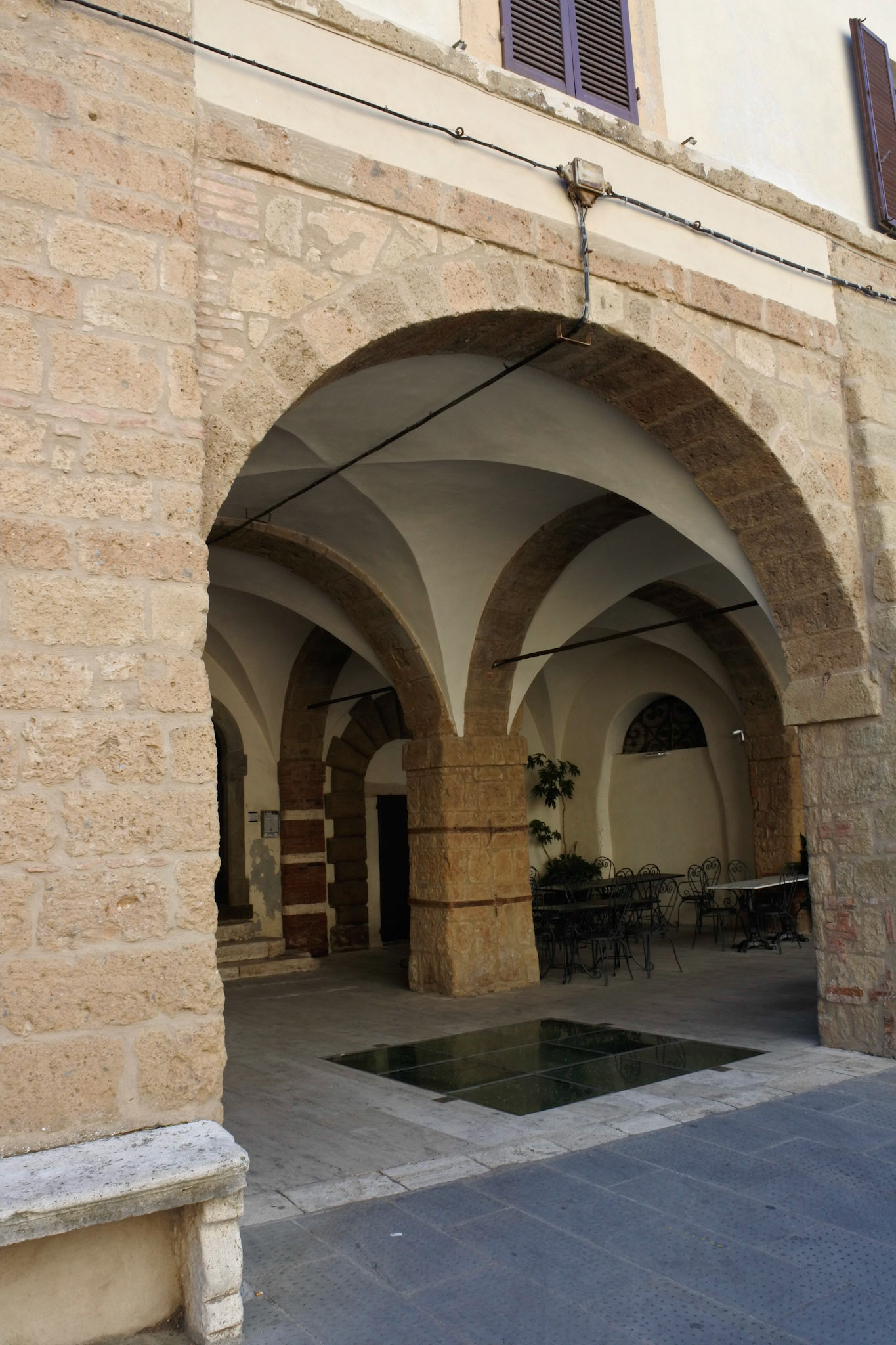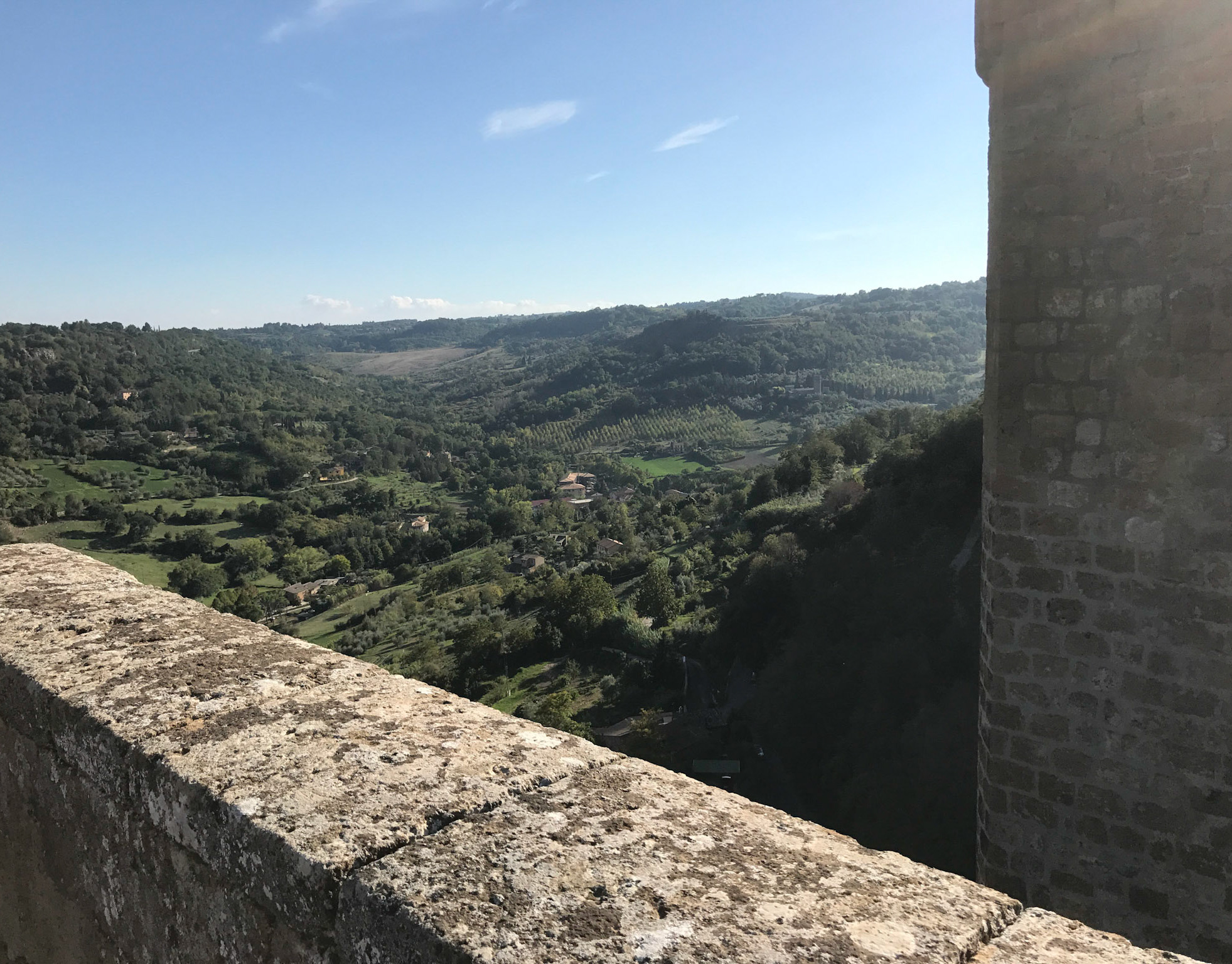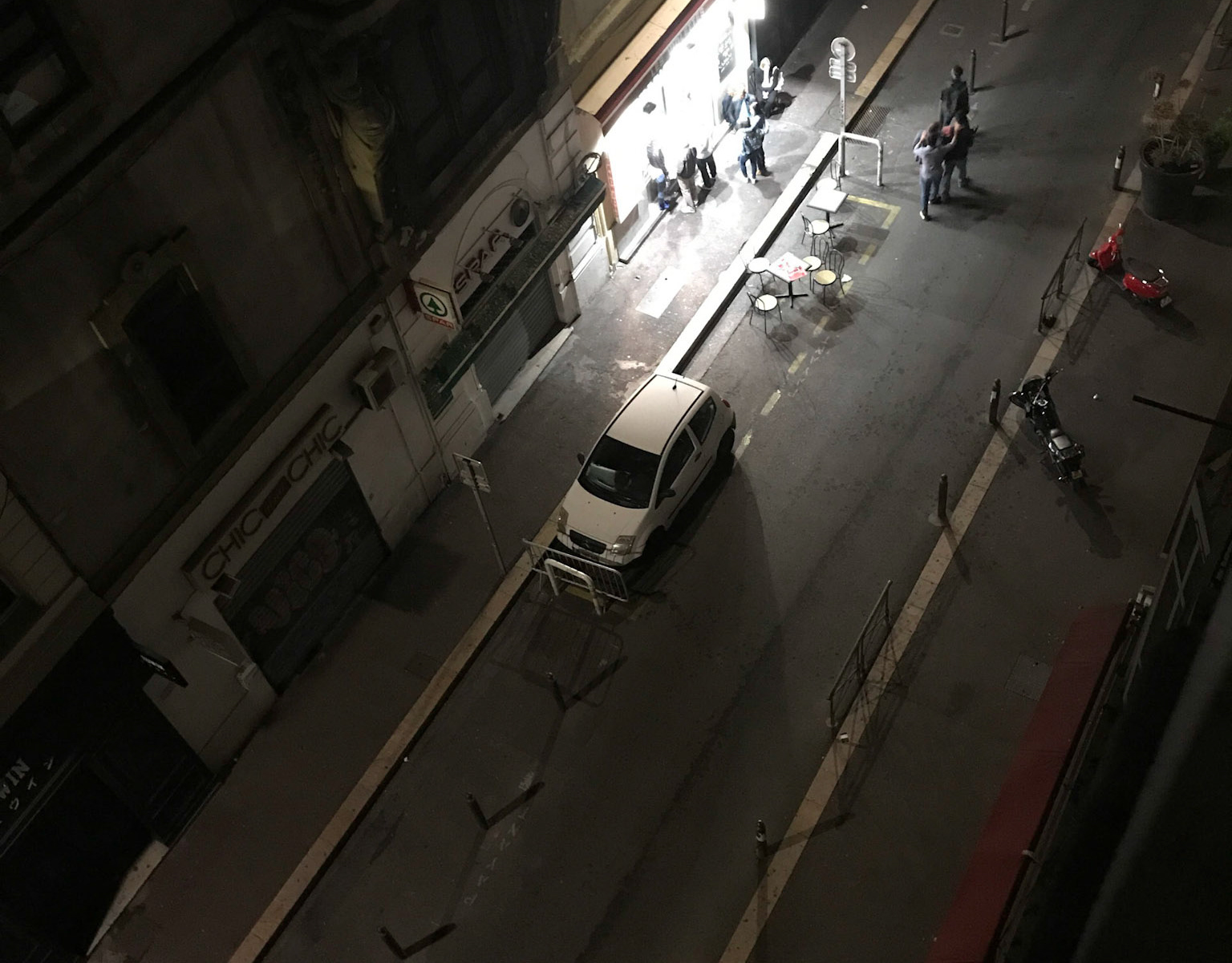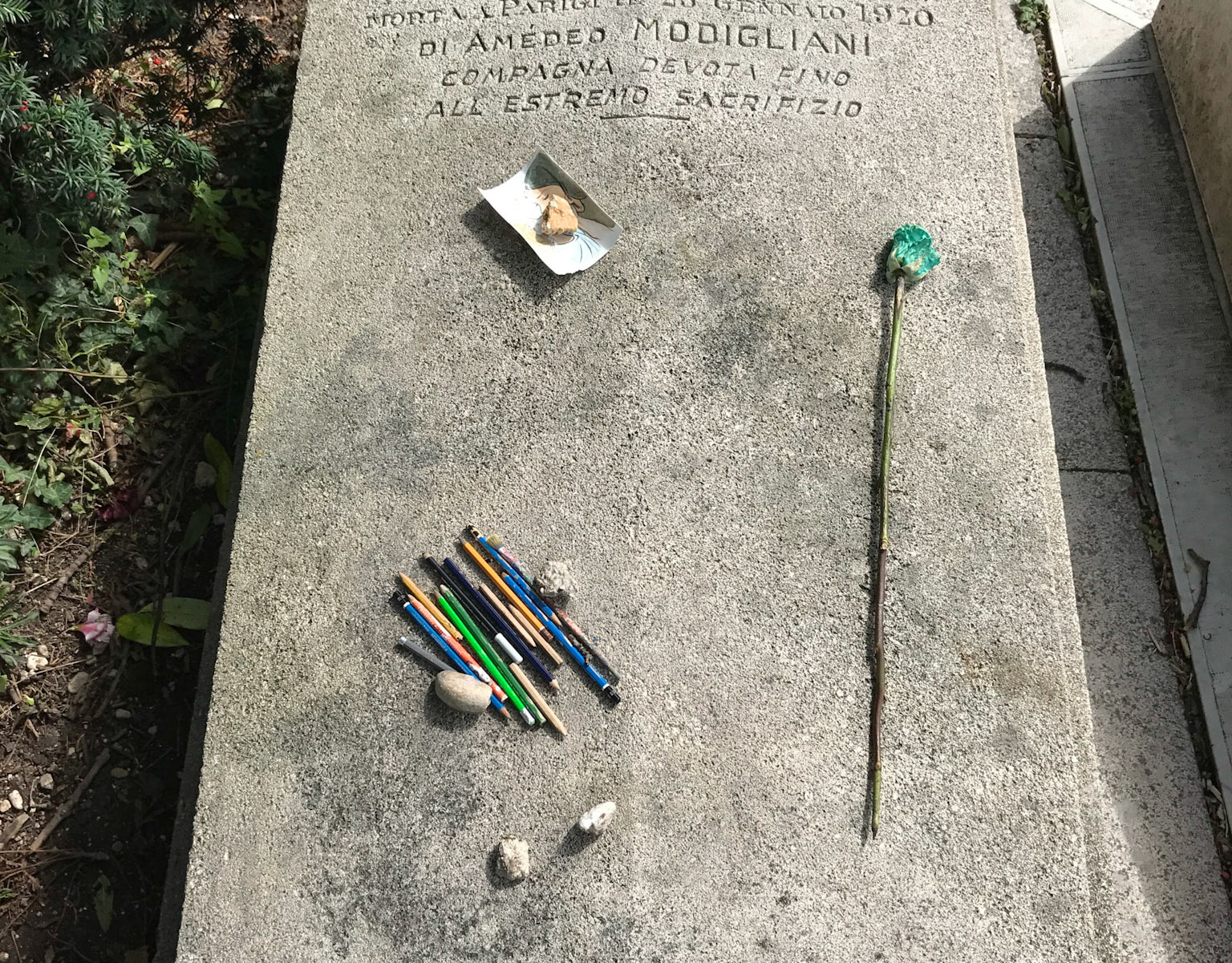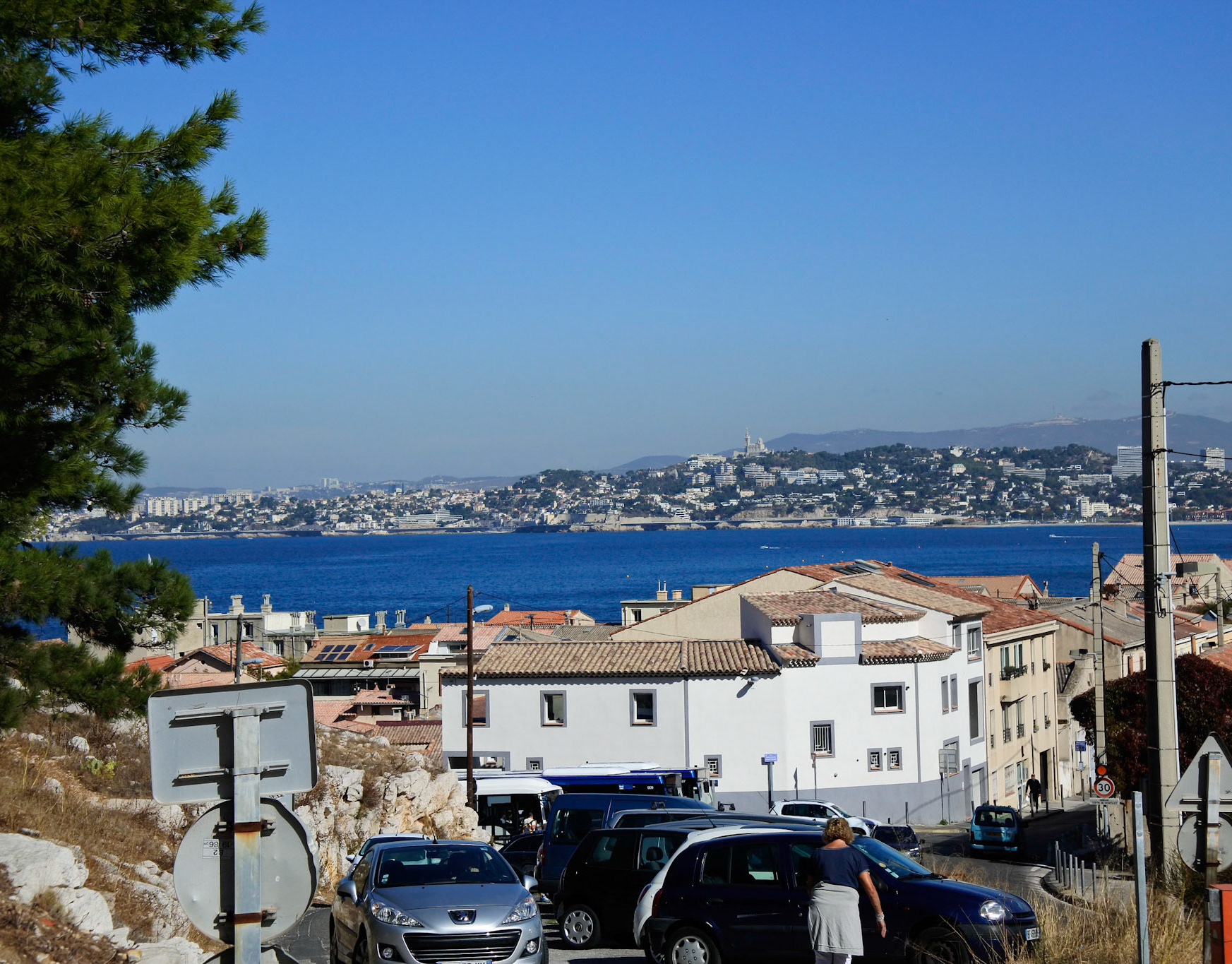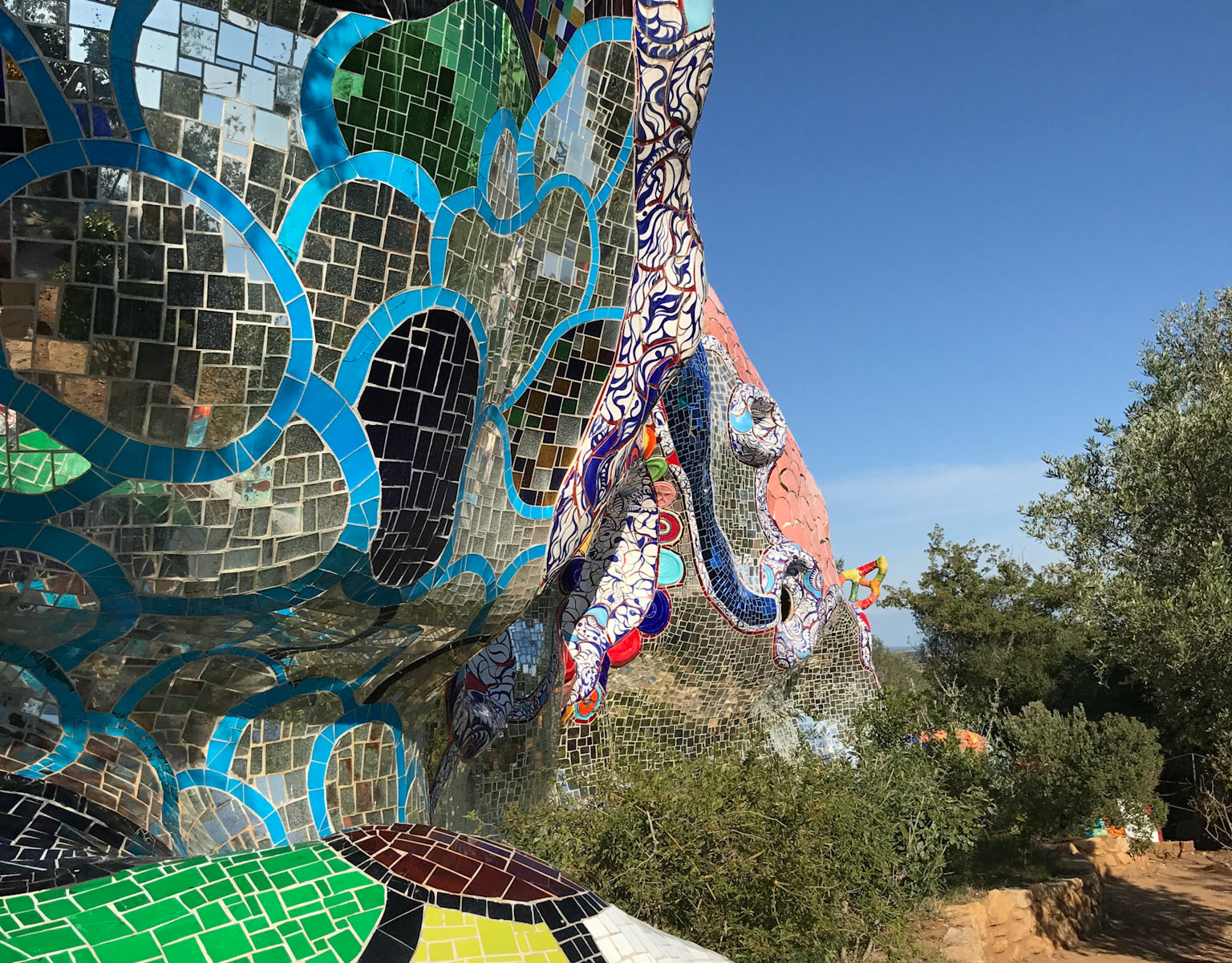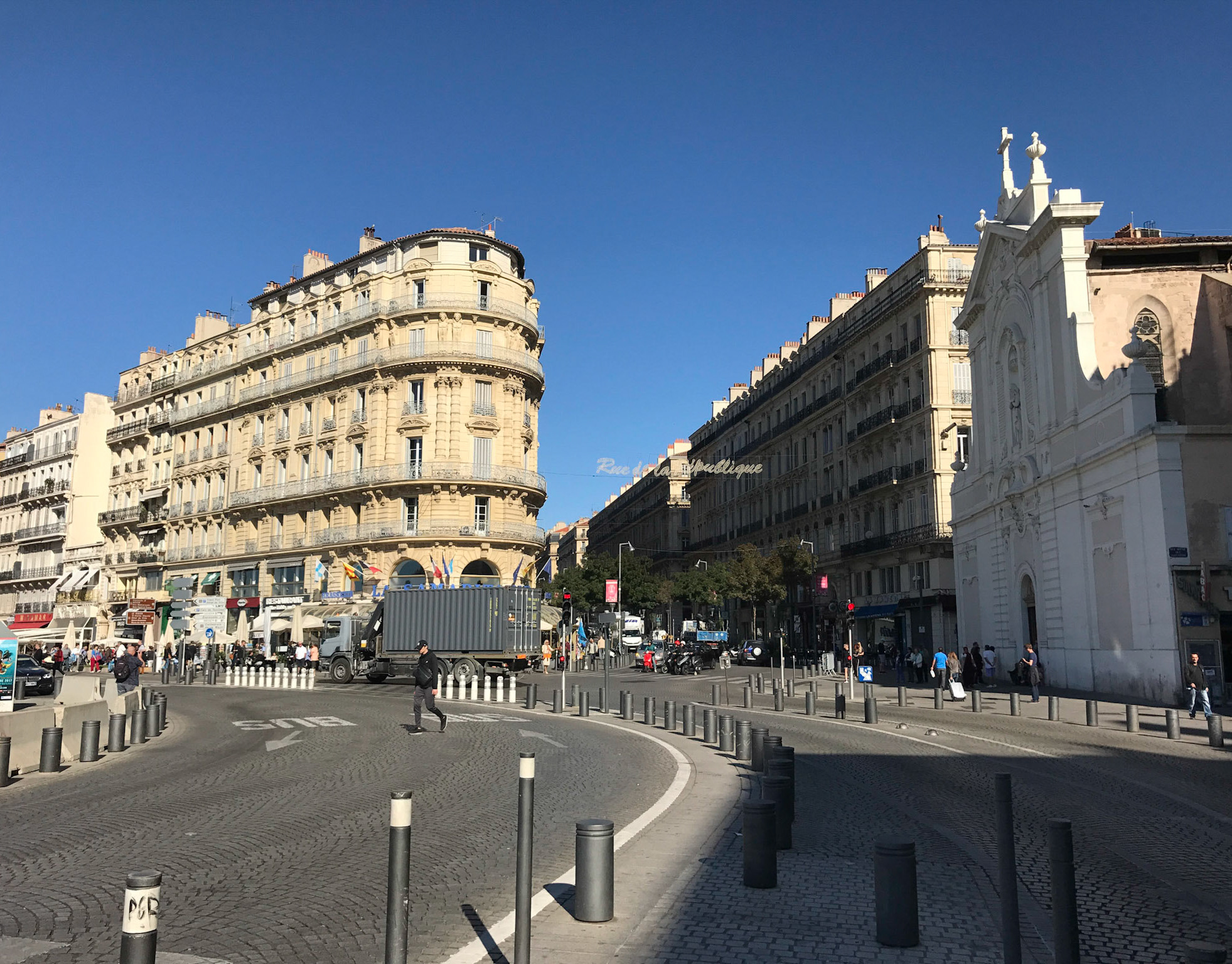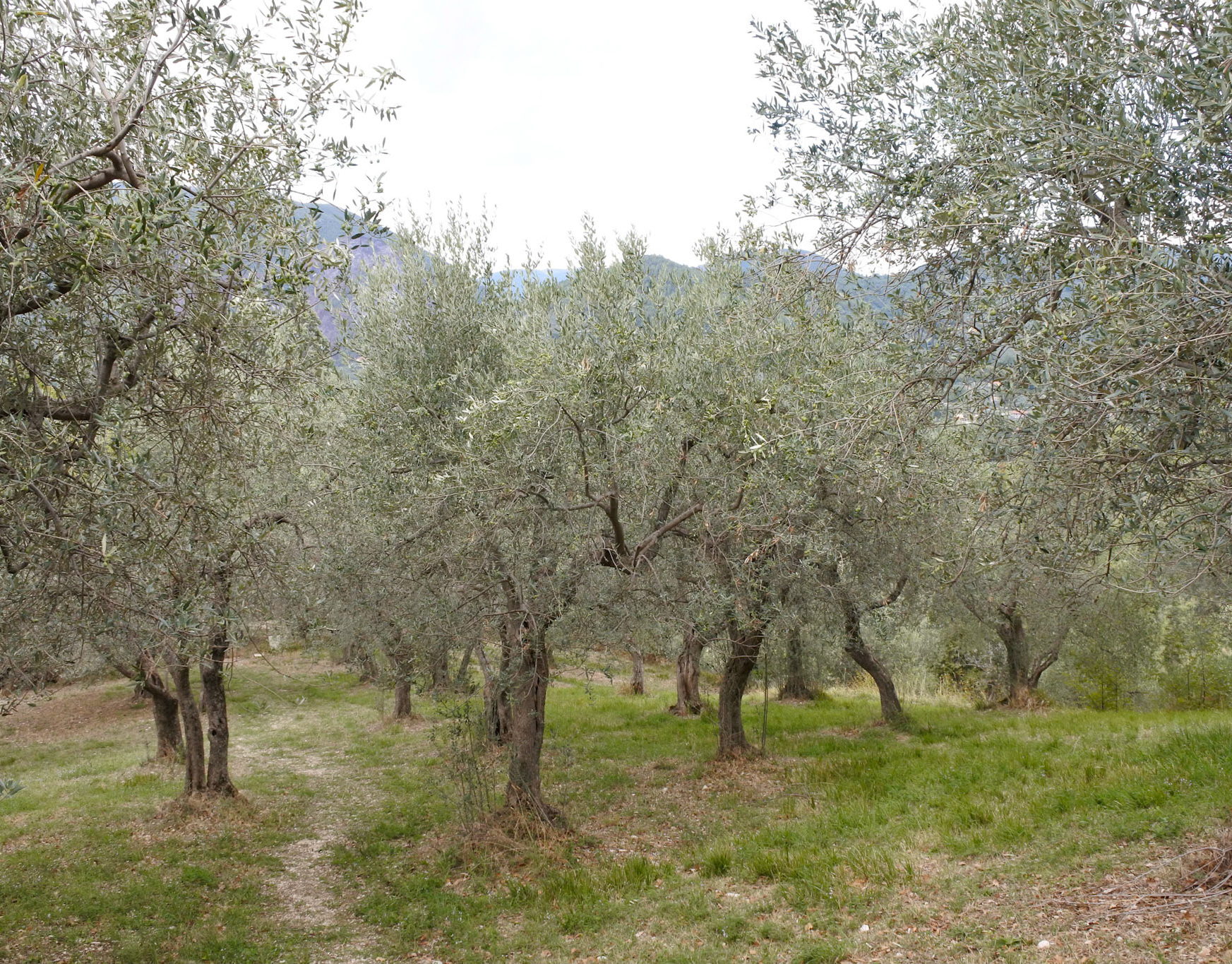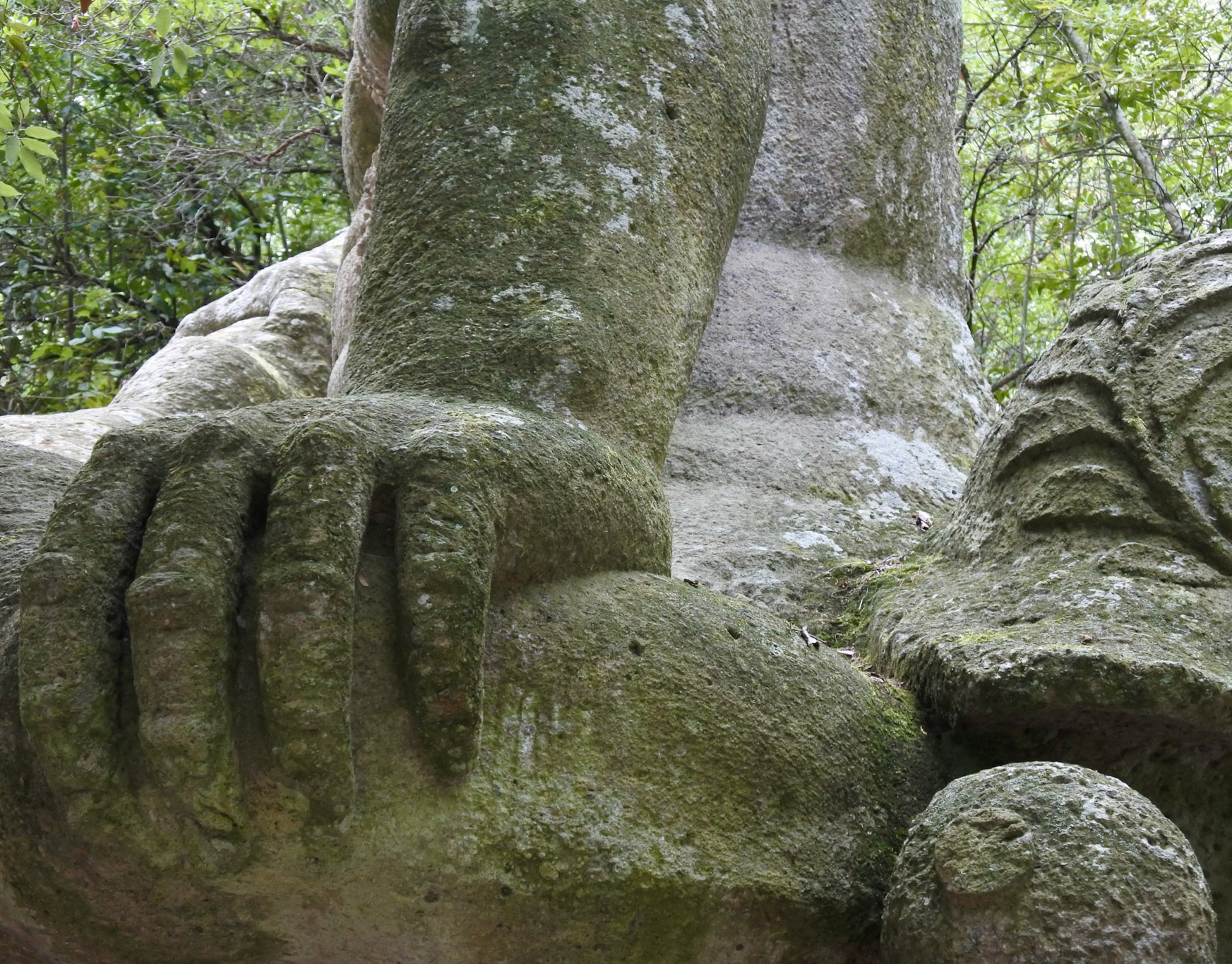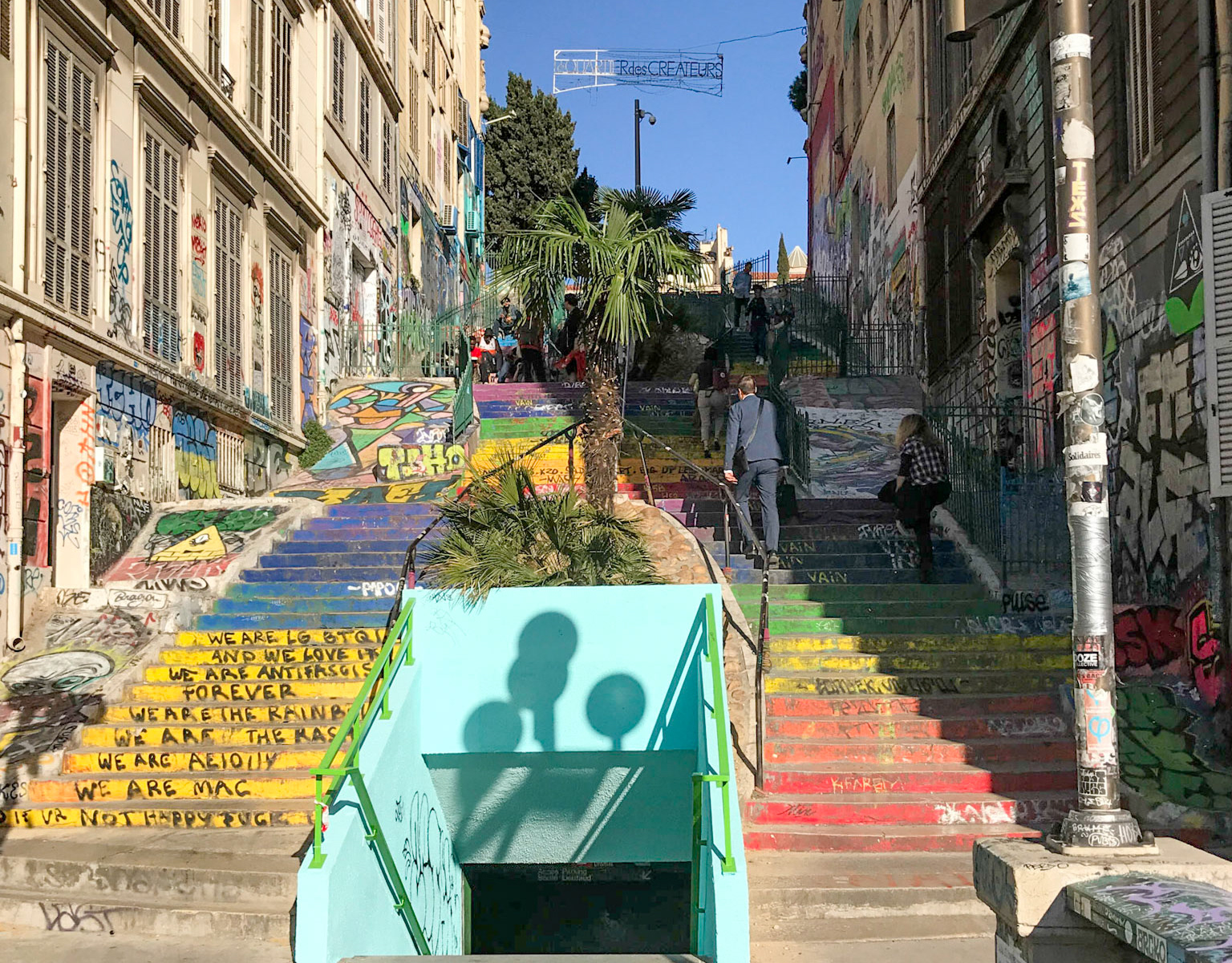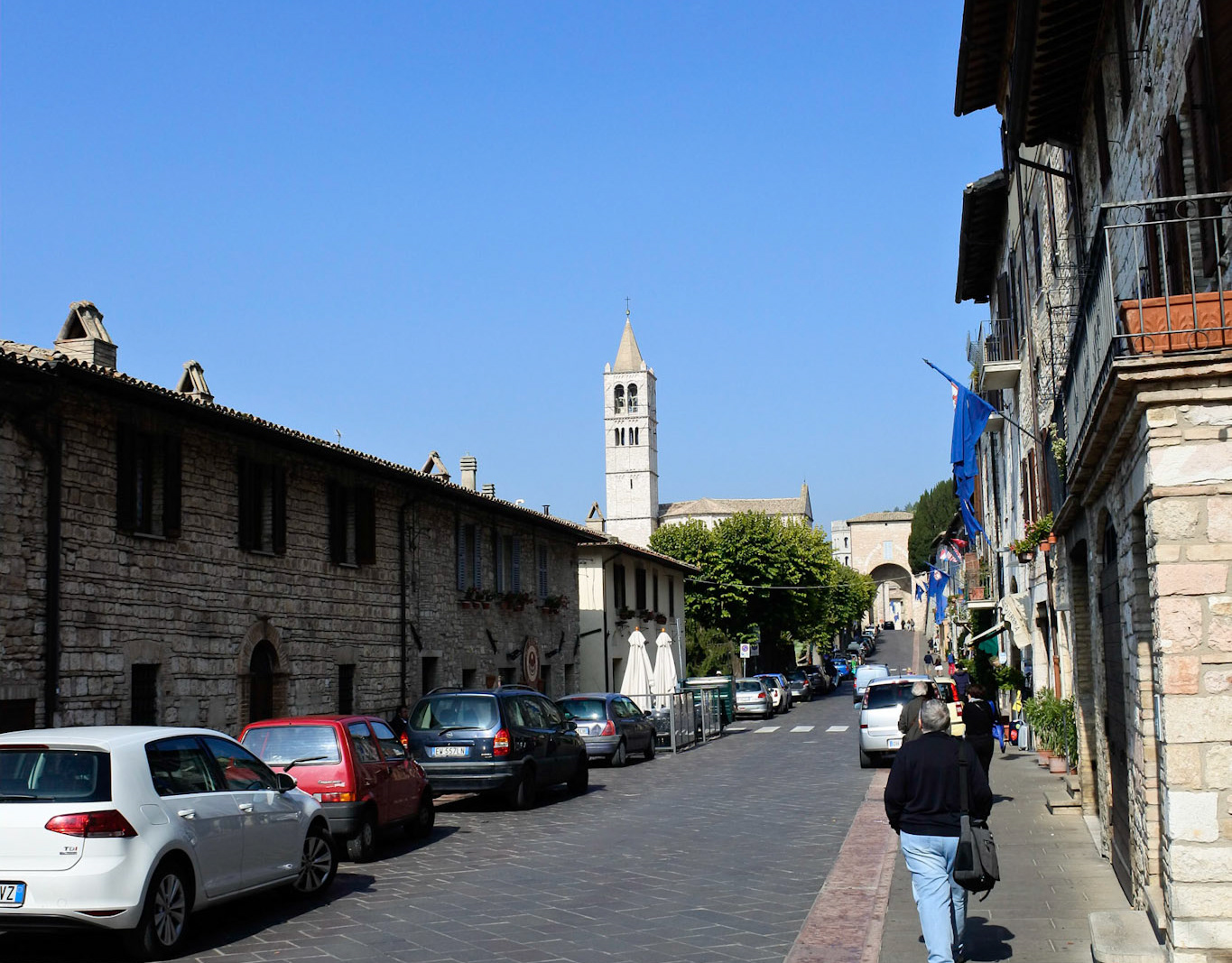Pitigliano is charming, and I was surprised we hadn't heard about it before. But we had focused in 2007 on a tighter circle around our Spoleto center. This postcard-worthy place was nearly two hours of bus ride (including the joyous bathroom breaks, good espresso, and stretching) from La Romanita. It's mostly NNW of Terni, about half way to Grosseto.
Coming into Pitigliano on the main road is one of the prize grand entrances onto a setting. From the southeast, the road crests the ridge you've been climbing and slips over the edge. Through the trees on the right, the cliff disappears below and straight across the valley there are flashes of light and line and shadow, then there's a hairpin turn and nothing obstructs the astonishing view of an ancient hill town that is just as much hill as town. The cliff of Pitigliano is surrounded on three sides by ravines full of caves dug into the tufa, and in the valley flow the rivers Meleta, Lente, and Prochio. From the first sighting, I wanted to snap a photo or do a sketch. Climb a cliff or pour boiling oil on invaders. It's really an old place, and it's known as Little Jerusalem because there has long been a Jewish community there, fully integrated into an otherwise Catholic and rural landscape. Of course, this calls for a visit to the Jewish museum—the several rooms and several levels of the old synagogue and bakery hewn from the rock. It dawned on me that something I've probably missed in all these towns on mesas is the invisible, vertical cities that have been carved over a couple of thousand years.
It sure feels like the Etruscans set the gold standard for hill towns. This is another place they've left their mark. That includes some unexplained vertical cuts in the tufa, some shallow and some deep. But after the Etruscans were defeated and displaced and after the Dark Ages had passed, Pitigliano belonged to one family or another.
Then the history of Pitigliano becomes part of a broader history—the Grand Ducy of Tuscany in 1562 and the Kingdom of Italy.
But what about this Jewish community? I didn't quite get the story while I was there. I got a helpful answer in Wikipedia:
"For several hundred years Pitigliano was a frontier town between the Grand Duchy of Tuscany and, to the south, the Papal States. For this reason, the town was home to a flourishing and long-lived Jewish community, mostly made up by people fleeing from Rome during the Counterreformation persecutions. Jews of the town used one of the caves for their ritual Passover matzoh bakery, the "forno delle azzime" described in detail in Edda Servi Machlin's "Classic Cuisine of the Italian Jews." [1] After the promulgation of racial laws under Nazi influence, all the Jews of the town reportedly escaped capture with the help of their Christian neighbors.[2] Although there are almost no Jews left in town, not enough to provide a minyan, the synagogue (1598, with furnishings of the 17th and 18th centuries) is still officiated from time to time. It was restored in 1995."
Most of us from La Romita quickly dispersed throughout the town's dendritic streets. Our stop was going to be long enough for a relaxed lunch out with coffee before and after. Possibly some sketching time.
